The Carroll School of Management at Boston College
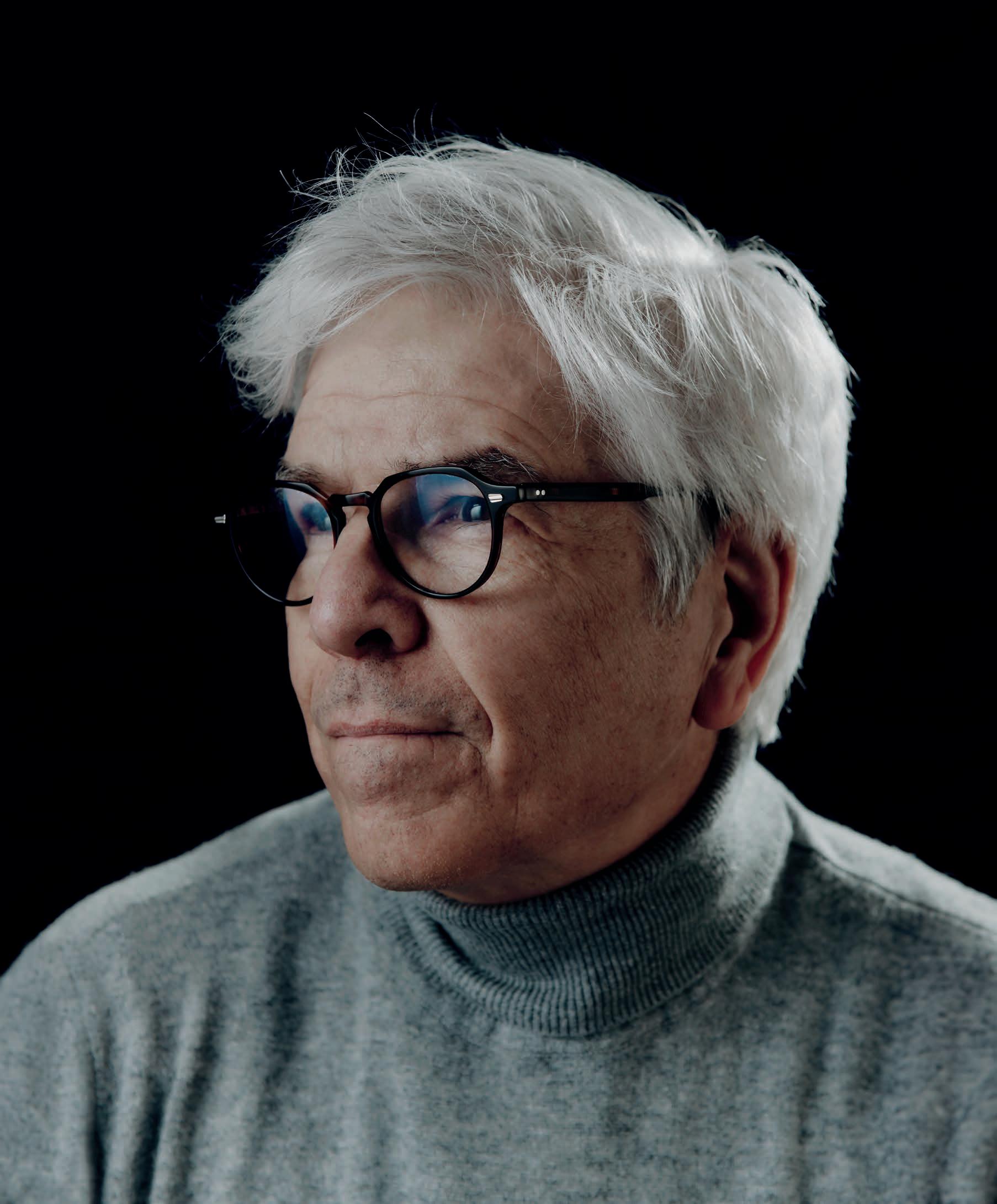
Natalie White ’20 Is Championing Women’s Basketball Through Moolah Kicks Jack Connors ’63, “The Last King of Boston”
Nobel Prize Winner
ISSUE NO.2 / 2024
He’s a Famous Optimist, So Why Is He Worried?
Paul Romer Meet Nine Alumni CEOs Shaking Up Their Industries the Boston College Way
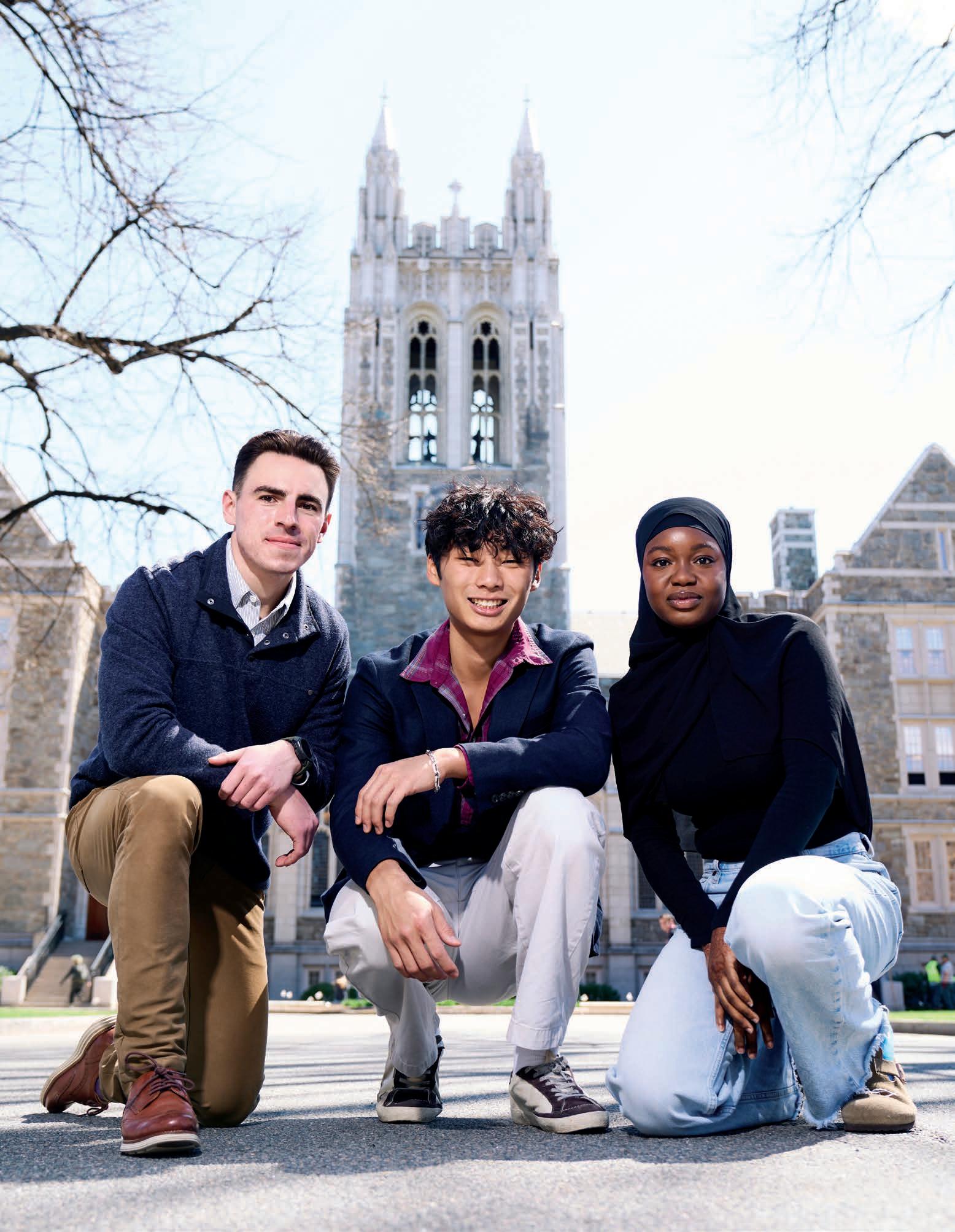
22
Carroll Capital The Publication of the Carroll School of Management at Boston College / Issue No.2 / 2024
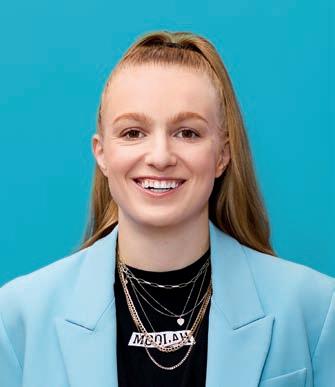
Launch
2 From the Editor Paths Up the Mountain BY WILLIAM
BOLE
4 From the Dean The More Things Change BY ANDY
BOYNTON
Ventures
5 Home Run
Joe Martinez ’05 left professional baseball for consulting. It made him understand the game better.
6 Accounts
Ronnie Slamin ’13 brings mixed-income housing to a rich enclave; a bold proposal from the director of the Center for Retirement Research; highlights from speakers on campus; and more.
10 Insights
How anyone can find meaning and hope on the job; the “State of Corporate Citizenship” report.
12 Enterprise
Natalie White ’20 pens a love letter to women’s basketball with her brand Moolah Kicks.
14 Application
AI can write, calculate, and even joke, but can it know when your boss is having a bad day?

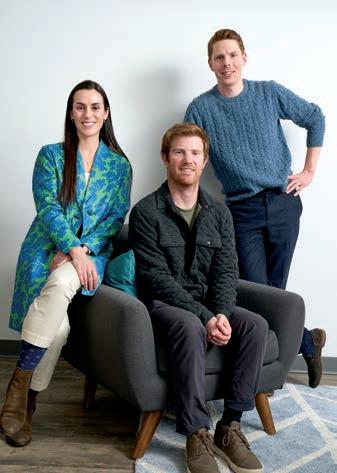
35 Disabused
When helping hands are picking the elderly’s pockets.
36 Community
Veterans find support as they make their way to the MBA; alumni entrepreneurs paying it forward with SSC Ventures; the year in competitions.
40 Research
Recent findings by Carroll School faculty members.
16
A Nobel Laureate Remakes Himself at Boston College
Paul Romer won a Nobel Prize in economics for his upbeat theory of growth, which shined a light on how ideas, rather than things, lead to economic expansion and human progress. Now he’s teaching coding and taking on threats in the digital realm that he fears could forestall new discoveries. Can he change the world twice? BY WILLIAM BOLE
22
In Any Way, Shape, or Form
Students in the Carroll School of Management spend their years on the Heights charting their own unique paths to adulthood. The University isn’t just standing on the sidelines cheering them on. From academics to extracurricular life, Boston College is shaping the whole experience through formative education. BY
JACLYN JERMYN
26
The Changemakers
Running businesses ranging from startups to Fortune 500 companies, these nine Carroll School alumni CEOs are shaking up their industries the Boston College way. BY ABANTI AHMED ’25, WILLIAM BOLE, MASON BRAASCH, AND JACLYN JERMYN
42 Impact
More aggressive recruiting timelines; why every Carroll School student is learning how to use business analytics.
44 Investments
Spring Portico classes provide second-semester seniors with a space to reflect; a new accounting course prepares students for a changing world.
46 Distinctions
Christian Cavaliere ’20 takes a swing at the US Open; the first Carroll School women grads celebrate an anniversary; and other achievements.
48 Bottom Line
Jack Connors ’63, “the last king of Boston.”
2024 CARROLL CAPITAL 1 COVER PHOTOGRAPH BY TONY LUONG
Contents
26
Features
Assets
36 12 Photographs, from left: Joshua Dalsimer, Dana Smith, Kelly Davidson; Opposite: Kelly Davidson

Students can find multiple paths up the mountain by virtue of Boston College’s approach to formative education, which helps them grapple with the big questions as they shape their studies across disciplines and their experiences into a coherent whole.
Paths Up the Mountain
How management students are expanding their horizons, just like their professors.
BY WILLIAM BOLE
There’s an offbeat story of a young man who sets out to learn the meaning of life, and he’s told that there’s a great sage in the high altitudes of India who can tell him what it’s all about. So he travels to the Himalayas—picture a backpacker trekking through mountains and wild forests—and reaches the top. There, he finds the sage meditating in an isolated cave and asks him, “Could you tell me the secret of the meaning of life?” After a few minutes, the guru opens his eyes, looks up from the flat dirt floor, and speaks … “Life is a fountain.” The seeker replies, “You mean, I traveled thousands of miles for you to tell me that life is a fountain?” And the sage tells him, “Okay, so it’s not a fountain.”
Fortunately, young men and women at Boston College don’t need to hop on planes and hike through gorges to seek a higher understanding of themselves and their place in the universe. They can find multiple paths up the mountain by virtue of Boston College’s approach to formative education, which helps students grapple with the big questions as they shape their studies across disciplines and their experiences into a coherent whole.
You could view the process up close by turning to page 22 of this
issue of Carroll Capital. Our story spotlights busy Carroll School of Management students patching together their formative education, toggling between finance in Fulton and philosophy in Gasson, extending outward through organizations like the Joseph E. Corcoran Center for Real Estate and Urban Action, and reflecting on their experiences together with peers at an array of retreats. With any luck, they’re forming themselves—intellectually, socially, and spiritually.
All that might not sound very
hard-nosed for management students. As we report on page 42, they have pressures that past Eagles didn’t have, including for many the need to start jockeying for internships at the start of sophomore year, before they’ve had much of a chance to explore academic interests and career options. They need to be pragmatic, in other words. And yet, those profiled in our article about formative education would heartily agree with G.K. Chesterton’s observation in his classic work Orthodoxy. Chesterton explained that pragmatism is about human needs—“and one of the first of human needs is to be something more than a pragmatist.” Students today are seeking the “something more.”
The faculty play no trifling part in the scheme of student formation. In and out of the classroom, they model the habits of mind that lead students to think broadly, critically, and analytically. One such scholar is Seidner University Professor Paul Romer, profiled on page 16. He sets an example of how to form and reform yourself by seeking ideas and inspiration in all places, a trait that won him a Nobel Prize in economics.
And some Carroll School professors not only impart meaning but also devote their research to the subject. They include several Management and Organization professors whose research (featured on page 10) offers insight into how anyone, whether a hospice nurse or a financial analyst, can find meaning in their work. As future professionals, Boston College students get a head start on cultivating that sense of higher purpose, and they don’t even have to scale the Himalayas to reach those heights.
From the Editor 2 CARROLL CAPITAL 2024
Launch
PAGE 22 PHOTOGRAPH BY MATT KALINOWSKI
Contributors
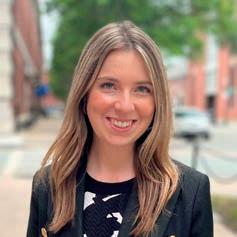

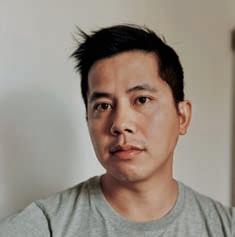
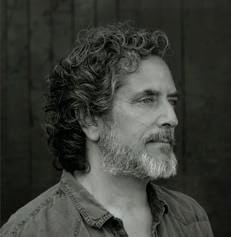
A proud Coloradan, Davis recently graduated from Boston College with a bachelor’s degree in Communication. In addition to completing minors in English as well as Management and Leadership, Davis also served as a staff writer for The Heights and as president of the Ignatian Society. For this issue, she reported on golfer and business owner Christian Cavaliere ’20 and his journey from the Heights to the life-changing experience of playing in the 2023 US Open (page 46). Davis lives in Boston and is pursuing a career in public relations.
About
Check out our website and follow us on social media for the latest on the Carroll School of Management.
bc.edu/carrollschool
Facebook-square carrollschoolbc
TWITTER bccarrollschool
INSTAGRAM bccarrollschool
linkedin school/carroll-schoolof-management
Tim Gray WRITER
Gray is a freelance writer and editor who specializes in financial topics. He contributed to The New York Times for two decades, and has written books and case studies with professors from Harvard Business School and the Wharton School. In this issue, Gray covered topics including recent faculty research (page 40) and the utilization of AI in the workplace (page 14). A graduate of Georgetown University, he and his spouse, Joseph L. Sweeney Chair Mary Ellen Carter, live in Bedford, Massachusetts, with a spoiled pointer named Greta.
Mission
Originally from Clinton, Connecticut, Luong is a Boston-based photographer who earned an MFA from the Massachusetts College of Art and Design. His work has been exhibited in Boston and New York, and has appeared in publications including The Atlantic, Bloomberg Businessweek, The New York Times, The New Yorker, Esquire, Time, and Wired. He believes that the act of photography can be a conduit to understanding each other better. Luong photographed Nobel Prize winner Paul Romer for this issue’s cover story (page 16).
Smith is an editorial illustrator and photographer whose work has appeared in publications worldwide such as The New York Times, The Wall Street Journal, The Washington Post, The Boston Globe, Fortune, The Los Angeles Times, Stern, and Le Monde. In this issue, Smith depicted the nine Carroll School alumni CEOs featured in “The Changemakers” (page 26) through photo collage, a process he describes as akin to “putting together a jigsaw puzzle first and then finding a way to squeeze narrative tidbits in between.”
The Carroll School of Management at Boston College ranks among the world’s leading business schools. It offers a rigorous, transformative academic experience that integrates the study of management with the liberal arts, while developing critical thinking skills and fostering ethical leadership. Part of a vibrant, Jesuit, Catholic university, the Carroll School draws inspiration and direction from our centuries-old religious and intellectual heritage. We maintain an enduring conviction that successful management education in the 21st century must combine excellence in teaching and research with reflection and action. The Carroll School educates the whole person in an atmosphere that is inclusive, ethical, caring, collaborative, and respectful of all, consistent with Boston College’s institutional mission and motto of “Ever to Excel.”
Engagement
We invite alumni, parents, and friends to engage with Boston College and the Carroll School of Management, in concert with the University’s mission and priorities. Through opportunities such as the Alumni Association’s programming, the Career Center’s Eagle Exchange, or a gift to the Carroll School in support of students and faculty, the BC community can make a meaningful impact on the University and beyond. For more, visit bc.edu/alumni.
John and Linda Powers
Family Dean
ANDY BOYNTON ’78, P ’13
Editor-in-Chief
WILLIAM BOLE
Deputy Editor
JACLYN JERMYN
Assistant Editor MASON BRAASCH
Creative Director
ROBERT F. PARSONS / SEVEN ELM
SEVENELM.COM
Contributing Writers
ABANTI AHMED, MCAS ’25
PATRICK BOLE, MCAS ’24
RILEY DAVIS, MCAS ’24
TIM GRAY
OLIVIA JUSTICE, CSOM ’25
PATRICK L. KENNEDY, MCAS ’99
DANIEL M c GINN, CSOM ’93
ELIZABETH M c GINN
SALLY PARKER
LILIANA STELLA, CSOM ’27
MARGIE ZABLE FISHER, CSOM ’89
Contributing Artists
CHRISTOPHER CHURCHILL
JOSHUA DALSIMER
KELLY DAVIDSON
EDU FUENTES
JAMES GRAHAM
LUISA JUNG
MATT KALINOWSKI
MIKE LEMANSKI
TONY LUONG
ADAM M c CAULEY
KAGAN M c LEOD
LEE PELLEGRINI
DAVID PLUNKERT
DANA SMITH
STEPHEN VOSS
BRYCE WYMER
DAVID YELLEN
Image Specialist
STEPHEN BEDNAREK
Printing
ROYLE PRINTING
© 2024 Trustees of Boston College. All rights reserved. Carroll Capital is published once a year in June. Carroll Capital is printed by Royle Printing in Sun Prairie, WI. Please send questions, comments, or requests for more information to:
Phone: 617-552-1373
Mail: Carroll Capital, Carney Hall 443, 281 Beacon Street, Chestnut Hill, MA 02467
Email: carrollcapital@bc.edu
Opinions expressed in Carroll Capital do not necessarily reflect the views of the Carroll School of Management or Boston College.
2024 CARROLL CAPITAL 3
Tony Luong PHOTOGRAPHER
Riley Davis ’24 WRITER
Dana Smith ILLUSTRATOR
Launch
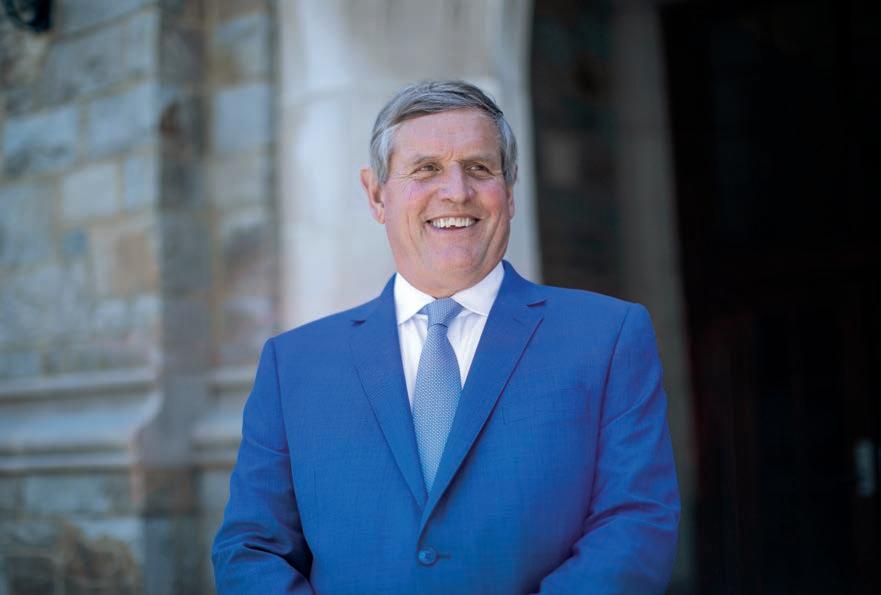
The More Things Change
Dynamism and stability at Boston College.
BY POWERS FAMILY DEAN ANDY BOYNTON
At the end of the spring semester, I found myself reflecting on the old and the new at Boston College, and how those two aspects of life hang together in a creative and dynamic balance on the Heights. Clearly, so much has changed. Just a sprinkling of examples: Boston College now has the HumanCentered Engineering program, aligned closely with the liberal arts and the Schiller Institute for Integrated Science and Society; we’ve built a bridge between management and the arts and sciences, with half of all Carroll School students majoring or minoring at the Morrissey College of Arts and Sciences, and around 1 ,500 MCAS students enrolled in our management minors;
also, as you may know well, the selectivity rates for Boston College undergraduate admissions are off the charts.
Still, almost every day brings reminders of how much has remained the same since I walked the halls of Fulton as an undergraduate during the 1970s. Students are still stressed out about Financial Accounting, as I was, too. They’re still taking theology in Gasson and sociology in McGuinn, still tossing footballs on Stokes Lawn (known in my day as the Dust Bowl), still seeking out the counsel of priests and professors during the occasional difficult times (the mentors have different names but they’re every bit as compassionate). I did all of that, and I still walk up and down the million-dollar staircase, alongside students who tend to climb up slightly faster than I do these days.
The two elements—dynamism and stability—have been essential to carrying out Boston College’s mission and staking out new paths at the Carroll School.
For example, we invested heavily in Business Analytics, revamping our curricular offerings in response to an urgent need for data skills in today’s organizations; our Business Analytics Department is now ranked 10th in its discipline nationally, according to U.S. News and World Report. But at the same time, leaning into tradition, we intensified the study of key ethical theories with application to business in our required freshman Portico class, and we went further to create a new slate of Portico courses for seniors who want to end their days at the Carroll School the way they began, with Portico. You can read about how both Business Analytics and Portico have
evolved on pages 43 and 45 of this Carroll Capital edition.
This interplay of old and new brings into focus not only our style of management education at Boston College but also the challenges in today’s rapidly changing business environments. The best organizations—in any industry—combine a quality of enduring greatness with a drive to constantly renew themselves. They draw upon a legacy of values and success, as well as a spirit of innovation. An outstanding example is Amazon, which has built upon a foundation (namely, the retail website) with an ongoing stream of experimentation, including its cloud and web services.
You could get a taste of how all this is done, the Boston College way, by perusing our profiles of Carroll School alumni CEOs (page 26), who are tackling tough issues in their industries, ranging from cybersecurity and turbulence in the banking industry to diversity and sustainability. They’re succeeding partly by applying the lessons they learned and values they encountered on the Heights. And then there’s the illustrious Jack Connors ’63, H ’07, P ’93, ’94, who makes things happen for his alma mater and his city by personifying the dynamism of old and new. He’ll regale you on the last page of this publication with his stories and wisdom.
Boston College and the Carroll School have made great strides in recent times, but the gains would have been few and far between without the continuity—most essentially, the Jesuit Catholic ethos and liberal arts tradition that animate the curriculum, student life, and other areas of the University. Change and stability will carry us further still. Ever to Excel!
From the Dean 4 CARROLL CAPITAL 2024
PHOTOGRAPH BY MATT KALINOWSKI

Home Run
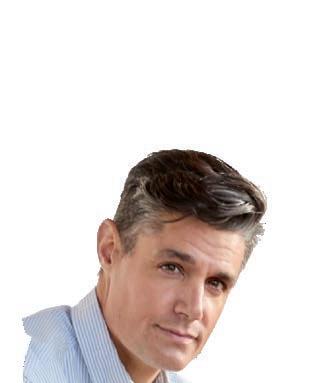
Ventures
JOE MARTINEZ ’05 LEFT PROFESSIONAL BASEBALL FOR CONSULTING. IT MADE HIM UNDERSTAND THE GAME BETTER.
With something so steeped in American culture as baseball, it’s easy to forget that the sport is also a business. “Just like with any business, you always have your consumer in mind,” says Joe Martinez ’05. “We need fans to pay to watch, come to games, and buy merchandise.”
Martinez, the vice president of on-field strategy for Major League Baseball, spent a decade playing baseball professionally—even earning a World Series ring with the San Francisco Giants—before trading his jersey for a suit and entering the consulting industry, first at Morgan Stanley and then PwC. Martinez says it was a desire to up his professional game that made him take the leap, a risky move that paid off when the MLB came calling again in 2020. These days, part of his role revolves around implementing new league rules—like the introduction of a pitch clock—to improve gameplay and fan experience. While the MLB wants to ensure fans see a great game, “you don't want to make it too difficult for our players to do what makes them great,” he says. “I have a unique perspective,” he says of his experience on and off the field. “I consider myself very fortunate to be able to keep structuring my life around the game I love.”
JACLYN JERMYN
2024 CARROLL CAPITAL 5
Accounts P.6 Insights P.10 Enterprise P.12 Application P.14
PHOTOGRAPH
BY JOSHUA DALSIMER
Ventures Accounts
On the Heights

James N. Mattis
The former US Defense Secretary headlined the annual Finance Conference in May, highlighting threats to global stability. “The best way to deal with this is allies, allies, allies,” especially in Europe, he said. Other speakers included former Boston Fed president Eric Rosengren; NFL owners Jonathan Kraft, P ’24, and John K. Mara ’76, P ’03, ’05, ’08, ’12; and AI expert Anima Anandkumar.
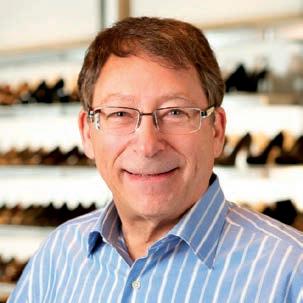
Stuart Weitzman
American shoe designer and founder of his eponymous luxury brand put his best foot forward at a February talk cohosted by the Edmund H. Shea Jr. Center for Entrepreneurship and Winston Center for Leadership and Ethics. “Risk is your absolute best friend,” said Weitzman. His risks have paid off: Luminaries like Beyoncé and Taylor Swift are regular customers, along with millions of others.
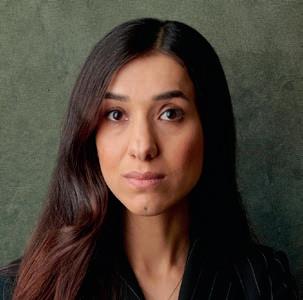
Nadia Murad
The Nobel Peace Prize winner brought her story of kidnapping at the hands of ISIS to the spring Winston Center for Leadership and Ethics Clough Colloquium. After surviving her imprisonment in Iraq, Murad started Nadia’s Initiative, which advocates for survivors of sexual violence.
“I knew silence was not an option,” she said of becoming an activist even after experiencing such brutality.
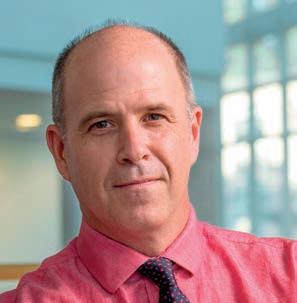
James M. Lang
The educator brought his gospel of “small teaching”— simple changes that bolster student learning—to the Carroll School’s Wilson Faculty Teaching Seminar in March. One example: pausing briefly during class; a study found that students doing so recalled more exam material than those who didn’t pause. “I sometimes feel like an evangelist about these things,” Lang said.

Lighting a Fire
With their startup MLV Ignite, two students are hoping to spark a passion for entrepreneurship in high schoolers.
BY OLIVIA JUSTICE ’25
Growing up in Hong Kong, Tim Liu ’26 spent his primary school years in a local education system that emphasized memorization and high-stakes exams. When he later had the opportunity to attend an international school, Liu was exposed to a learning environment where, in addition to getting good grades, creativity and open-mindedness were also rewarded. “It was a radical shift in teaching philosophy,” he says of the transition. “There was more emphasis on seeing things from different perspectives.”
When Liu arrived on the Heights, he became fast friends with Dylan Kim, MCAS ’26. The pair joined the Start@Shea Freshman Innovation Program, where they regularly attended workshops and information sessions hosted by the Edmund H. Shea Jr. Center for Entrepreneurship. Inspired, Liu knew he wanted to provide high school students with similar opportunities for holistic and hands-on education.
Together with Kim, Liu launched MLV (Mâm Lá Viêt—which translates to “Vietnamese Leaf Sprouts”)
Ignite, a two-week program in Kim’s home country of Vietnam that guides high schoolers through the steps of developing their own startups. Liu utilizes his finance and entrepreneurship concentrations to act as CFO, while Kim, a computer science major, serves as CEO. MLV Ignite was piloted in Winter 2024 and more than 100 students applied for 10 open spots.
“The idea is not for these students to be experts in entrepreneurship,” says Liu. To him, it’s more about giving them the confidence and resources to explore their business interests broadly. The first MLV Ignite summer programs will take place in two Vietnamese cities, Ho Chi Minh and Hanoi, and consist of English-language lessons on topics like pitching, revenue generation, and goal-setting.
“We’re trying to give students the skills they need to stand out on their college applications, but also prepare them [for adulthood] through entrepreneurship,” Liu says. “The most important thing is to find your passion. That’s what we hope to do, give them that passion.”
6 CARROLL CAPITAL 2024
EVENTS
Tim Liu ’26 and Dylan Kim, MCAS ’26
Kavner photograph: RC Rivera
TASTE MAKERS
LAUNCHING A
STARTUP IN THE FOOD INDUSTRY IS A NOTORIOUSLY TRICKY ENDEAVOR. MEET THREE ALUMNI WHO TOOK THE CHALLENGES IN STRIDE—WITH SOME DELICIOUS RESULTS.
BY JACLYN JERMYN
Can-Do Attitude
Kat Kavner ’14 was taking note of booming sales of canned beans during the pandemic as people stocked their pantries for extended stays at home. As an on-again, off-again vegetarian, Kavner already knew how versatile beans could be when it came to cooking, but she felt that canned food could use a bit of a makeover for a new generation of grocery shoppers.
Her company, Heyday Canning Co., which launched in Winter 2022, sells a line of canned beans in chef-inspired sauces. With bold, eye-catching branding and inventive flavors like Kimchi Sesame Navy Beans and Harissa Lemon Chickpeas, Heyday’s products are made for millennial and Generation Z consumers looking to get delicious meals on the table quickly. “If you look at Campbell’s ads from the 1950s, they were selling the same thing that we’re selling, which is easy home cooking,” she says, but Heyday’s products are tailored to its customers’ modern palates and busy schedules.
The company had difficulties starting during the pandemic, due to manufacturing challenges. Now, Heyday’s beans—and a new line of canned
soups—can be found in grocery stores nationwide. “There are all of these different categories with no innovation,” she says. “We want to reinvent canned food for a new generation.”
Sweet Success
After graduating and moving to New York to start a marketing career, Joe DeCarle ’09 stumbled across the story of a family-run coconut farm in Sri Lanka that fundamentally changed his goals. “I realized I wanted to connect this network of small farmers to consumers in America,” he explains. Inspired, DeCarle started Sweet Origins, a wholesale import company that works with farmers globally to source tropical products like coconut water and sell them to smoothie bars, juice shops, and more. It’s no small feat to navigate a small business with a global footprint. “When you’re moving goods across the world, so much is out of your control,” he says. “We had the pandemic with ballooning costs, then the issues in the Red Sea … political, economic, and otherwise, so many things can impact what’s happening on these trade routes.”

DeCarle has to maintain good relationships with shipping companies and farmers while managing customers’ expectations, he explains—and do all that outside his day job as a marketing director for American Express. He recently introduced new products to Sweet Origins, including açaí berries and dragon-fruit puree. “I’m trying to position the company as the expert at importing tropical ingredients,” he says.
Cold Comfort
Matt Fonte ’94 thinks it was about time someone shook up the ice cream industry. “It’s been the same since our grandparents were eating ice cream as children,” he says. In 2018 Fonte created ColdSnap, a rapid freezing appliance churning out ice cream and other frozen treats from single-serving pods in about two minutes— like a Keurig coffee maker, but much cooler.
When his daughters Sierra and Fiona (then nine and seven years old) pitched him an athome ice cream maker, Fonte explained that it already existed—the machines just required multiple, intensive steps to use. A serial entrepreneur, Fonte’s wheels were already turning. What if there was a machine that could produce fresh ice cream in just minutes?
ColdSnap hit the commercial market in Spring 2024. At the company’s factory in Billerica, Massachusetts, machinery has been sourced from around the world to produce and package the product mixes—like salted caramel ice cream, mango smoothies, and frozen margaritas—into shelf-stable pods. Doing this work in-house means that ColdSnap can keep proprietary technology protected. “We’re building a picket fence around our intellectual property,” Fonte says—ColdSnap currently holds 105 issued patents. This strategy also ensures that supply chain disruptions, like those that arose during the pandemic, won’t derail the business.
With ColdSnap currently available for sale to businesses, Fonte is already thinking about how to get his product in homes so other families can have ice cream on demand. It’s a goal that unites his team, he says. “We want to do something that has never been done before.”
2024 CARROLL CAPITAL 7
Kat Kavner ’14
MIXING IT UP
RONNIE
SLAMIN ’13 IS BRINGING
MIXED-INCOME HOUSING TO ONE OF THE RICHEST NEIGHBORHOODS IN WASHINGTON, DC.
BY DANIEL M c GINN ’93
As a freshman at Boston College, Ronette “Ronnie” Slamin ’13 signed up for a summer service trip to Jamaica because she wanted to make more friends. There, she witnessed the connections between poverty, education, and housing. “I was really taken aback by how poor the roads and housing were,” she says, describing leaky tin roofs and roads marred by cavernous potholes. And because of where they lived, residents had no real options for quality education. Their housing impacted their trajectory in life.
It’s approximately 2,300 miles from those low-income neighborhoods of Jamaica to one of the wealthiest areas of Washington, DC. But for Slamin, that service trip provided the spark for a career that’s led to a mammoth undertaking: a $19 million deal to buy and rehab a mixed-income apartment building a few blocks from the Bezos and Obama residences.
Slamin, who grew up in a low-income area of Delaware and went to boarding school in Maryland, arrived at Boston College with aspirations to become a sportscaster. But after returning from Jamaica, she registered for the Real Estate and Urban Action course taught by Joseph Corcoran ’59, H ’09, P ’85, ’86, ’87, ’98, and Neil McCullagh. Corcoran, who died in 2020, would later become the namesake of the Carroll School’s Joseph E. Corcoran Center for Real Estate and Urban Action, with McCullagh as executive director. During college (as an intern) and after graduation, Slamin also worked for
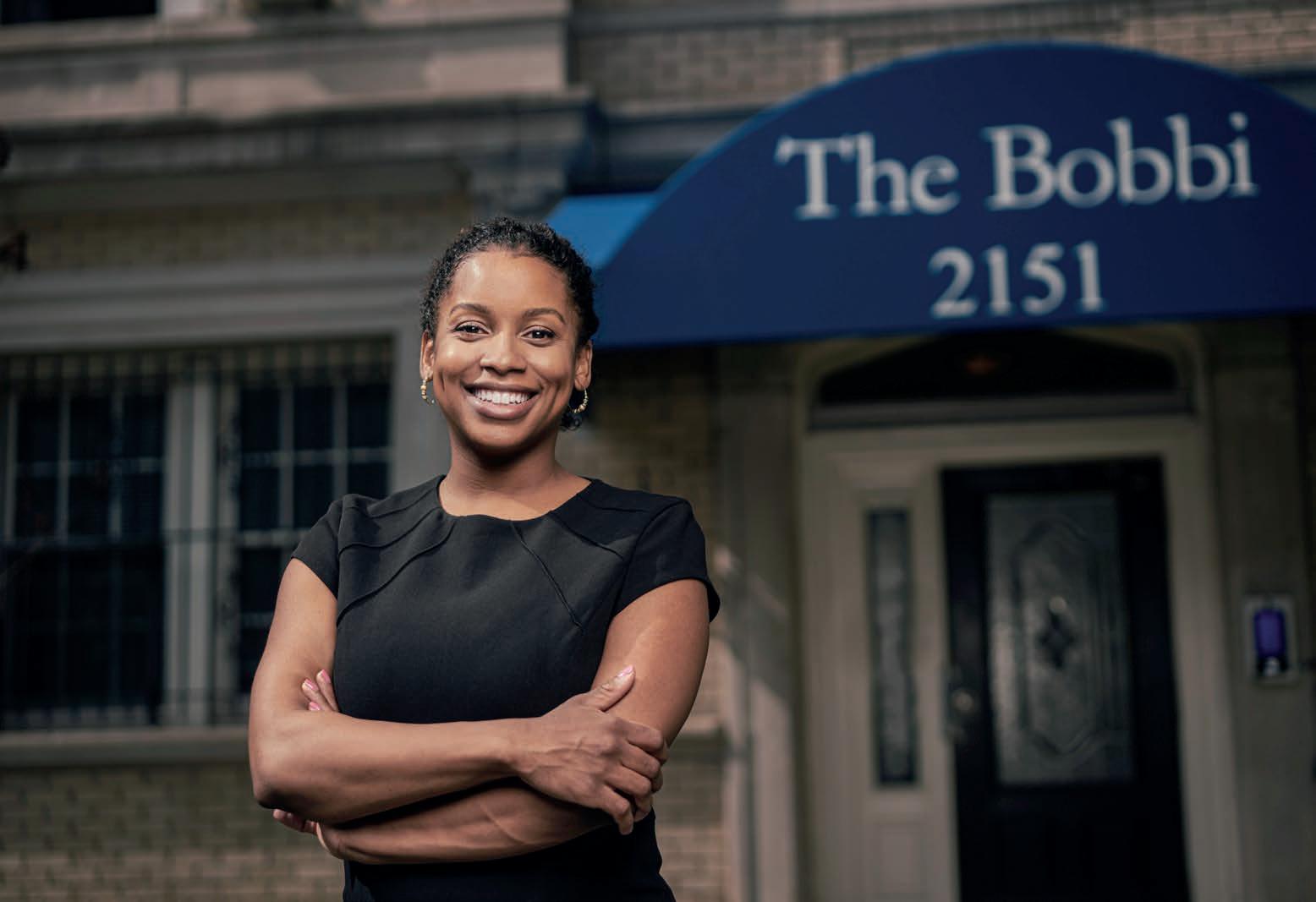
PHOTOGRAPH BY STEPHEN VOSS 8 CARROLL CAPITAL 2024
Ventures Accounts
Ronnie Slamin ’13 stands in front of an apartment building that her firm, Embolden Real Estate, is rehabbing and turning into affordable housing.
The American City Coalition (TACC), a Corcoran-funded nonprofit directed by McCullagh that focused on neighborhood revitalization. She became drawn to the vision of mixed-income housing, which Corcoran pioneered in Boston.
In 2020, after earning dual master’s degrees in urban planning and real estate development at MIT, Slamin and her husband, Robert Slamin, MCAS ’12, relocated to Washington, DC. While pregnant with their first daughter, Slamin opted to start her own firm, Embolden Real Estate, with a mission to develop mixed-income housing. Although she’d enjoyed working in community development, she says, “I realized I didn’t like being the middle person—I wanted to be the developer.” Slamin began looking for an opportunity to launch a project.
By 2022, she’d identified a target: a six-story, 23-unit, rent-controlled building in Washington’s Kalorama district. The neighborhood features single-family homes typically selling for between $1 million and $10 million. The beigebrick building was up for sale, and tenants were concerned about the reputation of a developer who wanted to buy it. So the tenants organized and, utilizing a program that allows residents the right of first refusal, searched for a partner to buy it. When tenants met Slamin, they were sold. “She really understood our predicament … how residents loved it here, and why it was important,” says former tenant association leader Ashley Warren. Slamin applied for grants, lined up financing, and in May 2023 closed on the building for $9.05 million. She renamed the property The Bobbi, after her daughter. (She has since had a second daughter.)
Before beginning a $10 million rehab later this year, Slamin must relocate all residents to temporary homes and pay all associated costs. Then her contractors will do a gut renovation, restoring historic features and adding new elevators, solar panels, a green-energy upgrade, and new amenities including a library and fitness room. Although Slamin loves the building, when she discusses the project, she talks mostly about the benefits of living in a great neighborhood. “It’s safe, it’s near great schools, and it’s near affluent individuals so people can grow their networks,” she says.
When construction is complete at the start of 2026, existing rent-controlled residents can move back in. When units turn over, they’ll be offered to families earning less than $130,000 a year, at rents ranging from $1,000 to $3,500— half the cost of comparable market-priced apartments in Kalorama. More than architecture or construction, it’s this aspect—the impact on residents—that makes Slamin excited about development. “I’m not into picking which marble goes into a luxury bathroom,” she says. “My interest is in providing stable, affordable, high-quality housing.”

A Difficult Conversation about Retirement Savings
“Andrew and I usually have opposing views—he is conservative, and I’m more liberal,” says Alicia Munnell, director of Boston College’s Center for Retirement Research, speaking of Andrew Biggs, an American Enterprise Institute senior fellow. In 2017, The Wall Street Journal highlighted their differences under the headline, “Is There Really a Retirement-Savings Crisis?” Biggs argued there wasn’t a crisis, while Munnell said there was.
Now, the two retirement experts are combining forces. Earlier this year, the center published a proposal by Munnell and Biggs titled “The Case for Using Subsidies for Retirement Plans to Fix Social Security.” In it, they make a bold statement: “The case is strong for eliminating the current tax expenditures on retirement plans, and using the increase in tax revenues to address Social Security’s longterm financing shortfall.”
Tax deductions for contributions to retirement plans primarily benefit high earners while failing to boost national savings significantly, according to the
research. They suggest that if the federal government eliminated tax benefits for 401(k)s/IRAs, it would collect an additional $185 billion in tax revenue. That would help shore up Social Security, which will be unable to pay full benefits in about 10 years without any policy changes.
The proposal drew extensive media coverage, which didn’t surprise Munnell, who is cited regularly in The New York Times, The Wall Street Journal, and other outlets. She and her team were a little stunned, though, by the volume of often-heated reactions on social media.
“The goal of the brief wasn’t to create controversy, or to get Congress to take immediate action,” says Munnell, who is the Peter F. Drucker Chair of Management Sciences. “We wanted to start a dialogue.”
Some critics argued that employers would have less interest in offering the plans if their workers were to lose the tax benefit. On this point, critics might have missed the fine print: The proposal also calls for a federal mandate that all employers must either provide a plan of their own or contribute to a national fund for that purpose. With or without this particular plan to fix Social Security’s shortfall, Munnell’s end goal is clear: “I want people to be able to live in dignity after they’ve spent their entire lives working.”
MARGIE ZABLE FISHER
’89
2024 CARROLL CAPITAL 9 ILLUSTRATION BY MIKE LEMANSKI

ON PURPOSE
HOW ANYONE, NOT JUST THOSE OUT SAVING THE WORLD, CAN
FIND MEANING AND HOPE ON THE JOB.
BY SALLY PARKER
When people think about doing work that’s meaningful, one picture that likely comes to mind is someone in a helping profession—say, a hospice nurse tending to a dying patient in their final days, providing comfort and easing their transition. ¶ Caring for the sick and dying is one way people find purpose in their work, but there are many more, and they look wildly different. These experiences give rise to what Aristotle called eudaimonia, a sense of flourishing. ¶ “It applies to everyone and not just people in nonprofits or stereotypically meaningful jobs,” says Ben Rogers, assistant professor of management and organization. “That worth can come from what you’re doing, it can come from
who you’re doing it for. It can be a million different things.”
For some, it’s working in an organization that strives to solve society’s challenges, fueled by a sense of hope. Others derive satisfaction from self-improvement and mastering new skills, or doing a difficult task that requires sustained effort—uplifting experiences that a financial analyst can have just as much as a social worker. For many, it’s not the job itself that is a source of meaning but what it enables outside of work—the ability to provide for a family, for instance. “Everyone falls into one or more of those buckets,” Rogers says. “It’s really difficult for people to sustain work for any meaningful amount of time if they’re not doing it for some greater purpose.”
One challenge is that people often don’t connect the meaning they find in work with a larger life purpose, Rogers says. Because jobs
often demand sacrifices of time and effort, it’s natural to think there’s a trade-off between meaning at work and fulfillment in life.
But the two aren’t mutually exclusive, he says: Work is part of life, not a separate domain. What people find meaningful in life can find echoes in their work, and vice versa. For example, someone who enjoys working with others in their town on quality-of-life goals may get that same endorphin rush leading a feel-good community project at work. “People don’t often think of how these things fit together and how they can match up or be complementary,” Rogers says.
With his collaborators, Rogers has studied how personal narrative can boost meaningfulness through a “growth mindset” at work. A person may believe she can acquire a new skill, or may be convinced she can’t because it was hard one time when she tried it. The resulting story that she tells herself drives the level to which she finds work meaningful, they found. In one of the studies, an openness to learning new things not only created a greater sense of meaning at work but led to a desire to help other employees who also want to grow.
These narratives throw light on what mythologist Joseph Campbell called the hero’s journey. In this classic plot structure, the protagonist faces and overcomes challenges, leading to personal growth and transformation. To understand this narrative in the context of work, Rogers guided participants through a writing task to retell their life and career stories as a hero’s journey. “When people saw their journeys in their careers as a hero’s journey, they felt like their
ILLUSTRATION BY LUISA JUNG 10 CARROLL CAPITAL 2024 Ventures Insights
jobs themselves were more meaningful. They were able to see the results of this big journey, this story that they’re a part of,” he says.
Finding meaning through work is a central theme of recent papers by faculty in the Management and Organization Department, on topics ranging from the mixed feelings that gig grocery shoppers had about public praise of their work during the Covid-19 pandemic (Assistant Professor Curtis Chan) to how female managers, surprisingly, are more likely than male managers to limit gender equity policies (Assistant Professor Vanessa Conzon).
Judith Clair, professor of management and organization and a William S. McKiernan ’78 Family Faculty Fellow, has studied the role of hope in medical settings and in organizations that tackle entrenched global problems. In the daily grind of often-difficult work, it pulls people together toward a meaningful goal.
But hope can be crushed. In one organization Clair studied, a center for women who had been sexually exploited, staff and clients were devastated when a client who had become a role model for her success overcoming addiction died of an overdose. They began to question the value of their work. “The fact of her success supported the hope culture itself,” Clair explains, but this tragedy showed how “failures can be extremely emotionally difficult for the collective.”
And yet, setbacks can amplify meaning when they lead to renewed commitment. Clair says, with a splash of hope: “Meaning still can be found in a variety of really horrible circumstances—times when hope seems hard to achieve.”
Speaking More Softly
“State of Corporate Citizenship” report finds that companies are treading more carefully on issues of corporate responsibility.
With critics on all sides and regulators breathing down on them, companies looking to do the right thing are still pushing ahead on social and environmental issues. But they’re doing it a little more quietly.
That’s according to a newly released report by the Boston College Center for Corporate Citizenship. In the biannual survey, nine out of 10 executives reported that during the previous two years, leaders in their company had taken a stand on ESG (environmental, social, and governance) concerns—a robust 54 percent increase since 2020. Approximately 850 senior-level executives participated in the survey.
At the same time, these leaders are turning down the volume. “Some are stepping back from the marquee, but they’re not stepping back from social and environmental investments,” says Katherine Smith, executive director of the center, which is the largest organization of its kind with 500 corporate members that bring almost 10,000 employees to its programs each year. Quieter steps range from improving gender-equity policies to reducing plastic waste, moves that also align with business goals like employee retention and cost saving.
Companies are also shifting their public advocacy. The center’s “State of Corporate Citizenship” survey shows that in 2022, corporate leaders were voicing a clear stand
“There’s a lot of frustration about the continued fragmentation of reporting standards. Right now it’s the wild, wild West in terms of how companies are addressing these issues.”
Katherine Smith

on gender and racial equity and inclusion. That remains a central priority for the companies, but now their public statements are more likely to highlight issues like sustainability and climate change, which are viewed as less controversial. Still, because ESG in general has become a political hot potato, that, too, is a softer message. These changes reflect the intense pressure companies are under from various quarters, according to Smith. Corporations are facing the competing demands of employees, activists, and politicians of all political stripes. “It’s a sea shift in the ESG space, and we’re experiencing the storm of that shift right now,” Smith says.
On the regulatory side, new rules in the European Union are taking effect, and US companies are not prepared, Smith says. While US laws focus mainly on greenhouse gases and carbon emissions, the EU’s Corporate Sustainability Reporting Directive is more sweeping. It calls for a clear and comprehensive picture of what companies are doing on social and environmental issues.
American firms doing business in Europe, including many members of Smith’s organization, will be expected to comply. Some are scrambling to understand the requirements—but others are looking away. That’s partly because the regulations are complicated, with a raft of standards, each with its own requirements. “So there’s a lot of frustration about the continued fragmentation of reporting standards” in both the EU and US, Smith says. “Right now it’s the wild, wild West in terms of how companies are addressing these issues.”
SALLY PARKER
2024 CARROLL CAPITAL 11 PHOTOGRAPH BY KELLY DAVIDSON
Ventures Enterprise
CARRYING THE BALL
NATALIE WHITE ’20 IS WRITING A LOVE LETTER TO WOMEN’S BASKETBALL WITH MOOLAH KICKS.
BY JACLYN JERMYN
The first word that Natalie White ’20 learned to say was “ball,” so it’s fitting that at 26 years old, she’s the founder and CEO of the top women’s basketball brand, Moolah Kicks. While her business instincts have landed her products in stores across the country, her driving force is less about entrepreneurial dreams and more about building a community for women’s basketball fanatics just like her.
White loved sports from a young age, playing soccer, football, lacrosse, and basketball all by the time she was a high schooler. She began her college search interested in Boston College—White wanted to study business and her older sister Whitney was already on the Heights—but what sealed the deal was getting to try out for the varsity lacrosse team, even after a high school injury. “Boston College was the type of school I wanted, where everyone gets a shot,” White says.
She didn’t end up on the lacrosse team, but while exploring academic life at the Carroll School as a finance and entrepreneurship student, she decided to join the women’s club basketball team. She later also became a manager for the women’s varsity basketball team. Despite spending so much time thinking about basketball, White hadn’t thought much about the fact that she was wearing men’s sneakers on the court.
The shoe choice wasn’t a preference, but a necessity. The vast majority of basketball sneakers
marketed to women are just smaller versions of men’s sneakers. “I saw this ad with four WNBA players holding sneakers named after NBA players,” she says. “You can be the best in your game, but at the peak of your career, you’ll still be promoting products made for someone else.”
Women’s feet typically have a higher arch than men’s, not to mention a slimmer width, a narrower heel, and a shallower lateral side right above the toes. “When we wear shoes built for the male foot, we’re more at risk for knee, ankle, and leg injuries,” White explains. Seeing that advertisement was the moment she knew she had to change the industry.
“The toughness of the industry is matched by how tough she is,” says John Fisher, a senior marketing lecturer and former CEO of athletic shoe and clothing company Saucony. Fisher was a mentor to White in her time at Boston College, but he initially tried to steer her toward any other career path. He told White: “Basketball is the most important category in the athletic footwear market. When they spit on you, it’s gonna be like a fire hose pounding your way.”
White took the reality check in stride. “It’s not about what I want. It’s about what the community needs,” she says. If no one else was solving the problem, why couldn’t it be her? “The outstanding attributes that she had
from minute one were the stubbornness and drive to succeed,” Fisher says. To White, Moolah Kicks is a product of Boston College, especially the women’s basketball community on the Heights. “They believed in [Moolah] when it was just an idea,” she says of her college teammates, who supported her dream by assisting with everything from initial concept ideation to testing out early prototypes. “That is the reason we’re here today.”
A year after graduating, White launched a Moolah Kicks presale campaign without having a single pair of sneakers ready. “There was one shoe and it wasn’t even all the way put together,” she says, laughing. That didn’t stop her—White and her friends made Moolah Kicks shirts and shot a promo video in Brooklyn. As the story got picked up by The Boston Globe and industry publications like Sneaker Freaker, Moolah Kicks saw $30,000 worth of sales within the first three weeks of the campaign. Then White heard that Dick’s Sporting Goods was looking to put an emphasis on women’s sports. She leveraged her industry connections, aiming for an introduction. It felt like a full-court shot—a bold move to get Moolah Kicks the attention it deserved.
She got her chance to pitch to Dick’s in June 2021. By that fall, Moolah’s first production run was in 140 Dick’s stores—a number that has grown to 570 stores nationwide. Moolah Kicks now counts Shark Tank personality Mark Cuban among its investors
and has endorsement deals with WNBA players Courtney Williams and Sug Sutton. White also landed a spot on the 2024 Forbes 30 Under 30 list.
“Being a woman in sports, it’s a smaller community,” says Boston College women’s club basketball team president CeeCee Van Pelt ’24, a finance and accounting student. “Having people like [Natalie] at the forefront, it’s really encouraging for all of us.” The women’s club team currently wears Moolah sneakers even though New Balance is the official athletic footwear and apparel provider for all Boston College varsity teams. “I used to play with men’s shoes. You don’t realize they hurt until you put on a shoe that actually fits,” she says.
White is currently a jack-of-alltrades for Moolah, which makes her grateful for the Carroll School accounting and operations classes she took, as well as the college art classes that taught her about design. Moolah recently added warmup gear and a low-top sneaker model to its product line, and it’s “continuing to get shoes on feet,” White says. “There are challenges every day, but you have to see those as opportunities. How do we keep getting better every season?”
The answer is simple: She has to make sure women and girls know there are basketball sneakers made by and for women ballers like them. “The goal for me was never that I wanted to start a company,” White says. “What I wanted was for the world to see women’s basketball the way that I do.”
“The goal for me was never that I wanted to start a company. What I wanted was for the world to see women’s basketball
the way that
I
do.” —Natalie White ’20
PHOTOGRAPH BY JOSHUA DALSIMER
12 CARROLL CAPITAL 2024
 Natalie White ’20 shows off some of her Moolah Kicks, which counts Mark Cuban among its investors and has endorsement deals with WNBA players Courtney Williams and Sug Sutton.
Natalie White ’20 shows off some of her Moolah Kicks, which counts Mark Cuban among its investors and has endorsement deals with WNBA players Courtney Williams and Sug Sutton.
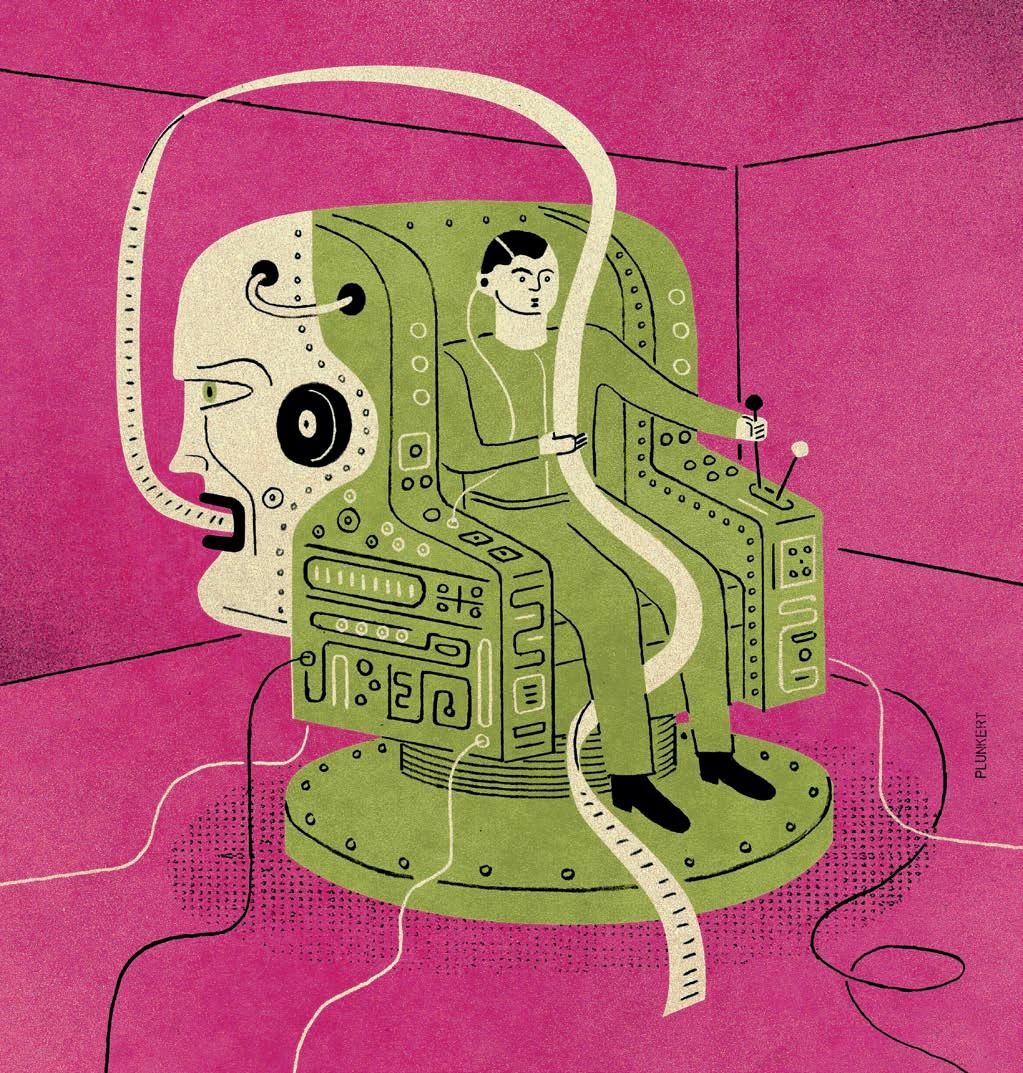
AI CAN WRITE, CALCULATE, AND EVEN JOKE...
BUT CAN IT KNOW WHEN YOUR BOSS IS HAVING A BAD DAY?
BY TIM GRAY
If you’ve read the headlines about artificial intelligence, you might believe it will turn us all into horses. Automobiles, of course, changed horses from essential laborers to luxury purchases in just a few years. AI, doomsayers predict, will do something similar to us humans. It’ll take our jobs and leave us to fill niche roles.
Professors at Boston College’s Carroll School of Management who study AI call predictions like that overblown. Yes, AI will revolutionize the workplace, and, yes, some kinds of jobs will disappear. The McKinsey Global Institute, for example, has estimated that activities accounting for 30 percent of hours currently worked in the United States could be automated by 2030. But Carroll School scholars argue that people who learn to use AI to increase their productivity could end up better off. As they see it, AI-adept folks will be able to work faster and smarter.
“I don’t think our real concern right now is about overall job loss,” says Sam Ransbotham, a professor of business analytics. “What’s going to happen is you’re going to lose your job to someone who’s better at using AI than you are, not to AI itself.”
How do you become an AI ace? It’s doable for many people, says Ransbotham, who’s also the host of the podcast Me, Myself, and AI. You don’t have to become an expert, just the most knowledgeable person in your office.
With curiosity and diligence, most anyone can learn enough to figure out how to apply AI on the job, he says. The way to start is with play. Go online and play around with ChatGPT, OpenAI’s chatbot. Try, say, having it write first-draft emails or memos for you. (But fact-check anything you use: ChatGPT and other large language models can sometimes offer up “hallucinations,” information that sounds plausible but is false.)
“AI tools are accessible to the masses,” Ransbotham says. “That’s an interesting change. Most people don’t play with Python
ILLUSTRATION BY DAVID PLUNKERT 14 CARROLL CAPITAL 2024 Ventures Application
code.” He uses AI to generate the background images for slides in his presentations. “For me, images on slides fall into the good-enough category. I want my computer code to be awesome, but the images I use on slides can just be good enough.”
In speaking of “good-enough slides,” Ransbotham was alluding to the peril of leaning too heavily on AI: what he calls the “race to mediocrity.… You can use an AI tool to get to mediocre quickly,” he explains. ChatGPT, for example, can give a draft of an email or memo in seconds. But its prose will be generic, lacking color and context, because ChatGPT “averages” the prose it finds on the web. Stop there, and you’ll end up with average prose.
Another way to tool up on AI is to read and listen. Plenty of established publications, like Wired and Ars Technica, as well as newer ones, like Substack newsletters by Charlie Guo and Tim Lee, cover AI. Ditto for podcasts like Ransbotham’s. As you explore, understand that, despite the hype, the technology does still have real limitations, says Sebastian Steffen, an assistant professor of business analytics. “I tell my students that ChatGPT is great for answering dumb questions,” he says. “For factual questions, it’s quicker than Wikipedia.”
But AI can’t make judgments, which is often what work entails. Your boss may ask you to help formulate strategy, allocate staff time and resources, or determine whether a worrisome financial indicator is a blip or the beginning of something bad. Facts can inform those decisions, but facts alone won’t make them.
Steffen cautions that it may take several decades before we really understand how to use AI and the best ways to incorporate it into our workplace routines. That’s typical of big technological rollouts. Even AI’s inventors may not see the future as clearly as they claim. “Alfred Nobel invented dynamite to use in mining, but other people wanted to use it for bombs,” he says. That troubled Nobel, a Swedish chemist, and was one of the reasons he funded the Nobel Prizes.
Even in an AI world, humans will still likely have plenty to do, says Mei Xue, associate professor of business analytics. “Think about doctors—we still need someone to touch the
patient’s belly” to get subtle information that sensors miss, she says. Robots can move pallets in warehouses, but they haven’t learned bedside manner. Xue says humans will likely continue to fill roles that require “talking to clients, meeting with customers, reading their expressions, and making those personal connections—we can gather subtle impressions that AI can’t.”
AI can’t tell whether the crinkles at the corner of someone’s eyes are from a smile or a grimace. So soft skills will still be rewarded. Brushing up on those may pay off.
Even in humdrum workplace communications, like those endless emails and memos, there will likely be a continuing role for us humans, Xue says. “What’s unique with us humans is personality, originality, compassion—the emotional elements.” ChatGPT can generate jokes, but it can’t know your coworkers or clients and what will resonate with them.
Similarly, you can let AI write your cover letters for jobs or pitches to clients. But you might fail to stand out, Xue says. ChatGPT “is searching for what’s available on the internet and putting together what’s best based on probability,” she explains. “For now, it can’t provide originality.”
Xue adds that one can find the need for a human touch, or voice, in unexpected places. “This weekend I was listening to some books on an app in Chinese. I found they offered two types of audiobooks— one read by a real person and one by an AI voice. I didn’t like the AI readings. They sounded fine but had a perfect voice. When you have a real person read, you feel the emotion and uniqueness.”
IN THE CLASSROOM
Teachable Moment
The Carroll School gives professors three options for using AI as a tool.
BY ELIZABETH M c GINN
With the launch of ChatGPT in Fall 2022, many educators feared that AI would completely upend academic integrity, a concern that many Carroll School faculty initially shared. “At first [the reaction was] ‘we have to stop this menace,’” says Jerry Potts, a lecturer in the Management and Organization Department. Still, a handful of professors started making a compelling case: AI wasn’t going anywhere—instead, the Carroll School would have to rethink how to use it academically. By the following fall, three new policy options had been presented: Professors could completely prohibit AI, allow free use with attribution, or adopt a hybrid of the two options.
Some faculty members, like Potts, have fully embraced AI as an educational tool. In his graduatelevel corporate strategy class, one project tasks students with pitching a business plan for a food truck with only 30 minutes to prepare.
Potts has found that while AI often helped with organizing the presentations, it was humans who came up with the most creative ideas overall. Bess Rouse, associate professor of management and organization and a Hillenbrand Family Faculty Fellow, opted for a hybrid AI approach and allows it only for specific class assignments. In one case, she instructed students to use ChatGPT in preparing for peer reviews, which minimized the awkwardness of critiquing other students’ work.
“There is less concern that this will be the ruination of teaching,” says Ethan Sullivan, senior associate dean of the undergraduate program. “We’ve instead pivoted to how AI complements learning.” For his part, Potts is optimistic. He says that if professors stay on top of this technology and adapt their courses accordingly, “We should be able to take critical thinking to another level.”
2024 CARROLL CAPITAL 15
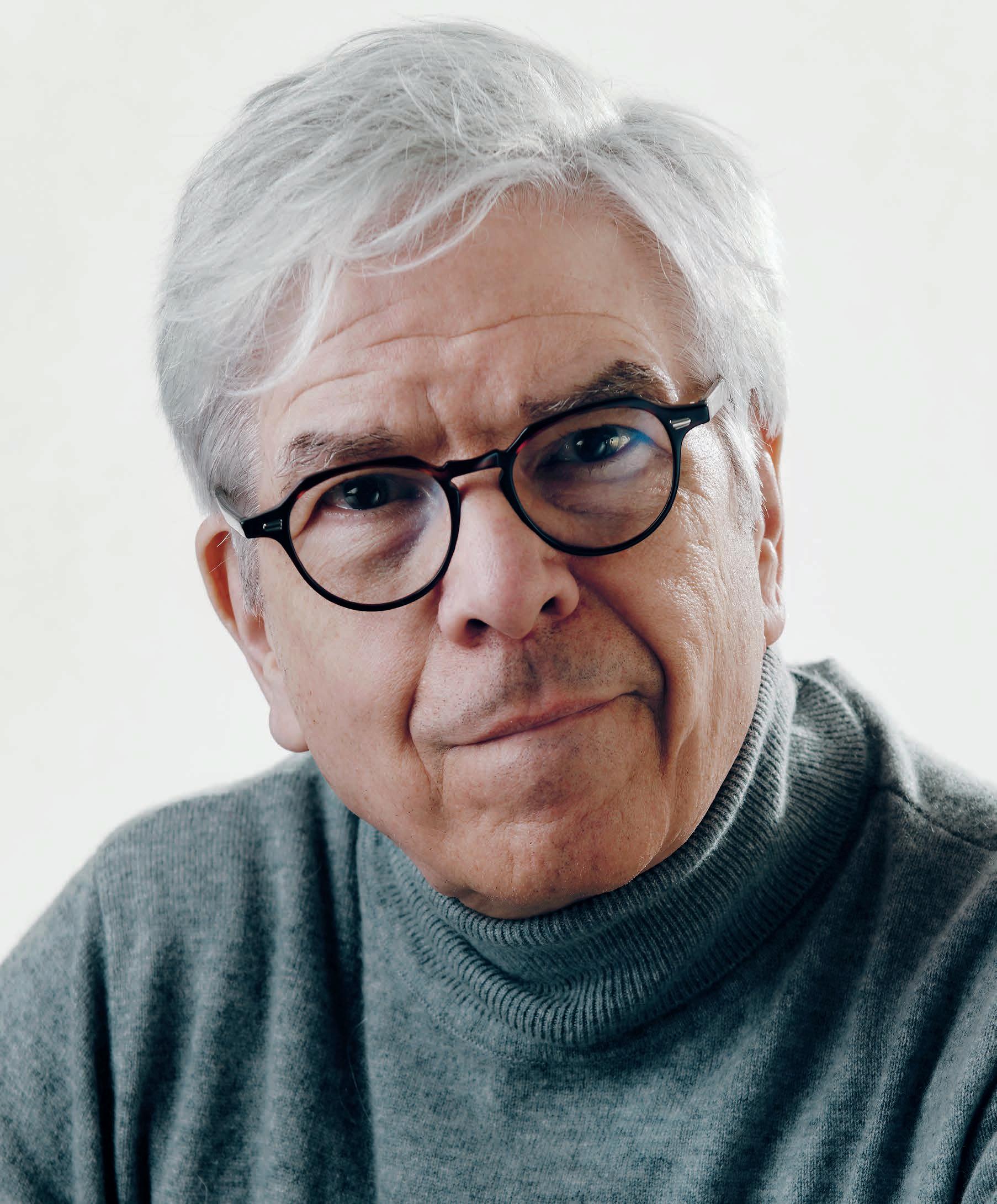
NOBEL AT A LAUREATE REMAKES HIMSELF BOSTON COLLEGE
Paul Romer won a Nobel Prize in economics for his upbeat theory of growth, which shined a light on how ideas, rather than mere things, lead to economic expansion and human progress. Now he’s teaching coding and taking on threats in the digital realm that he fears could forestall new discoveries. Can he change the world twice?
By WILLIAM BOLE
17
Photographs by TONY LUONG
Inside a tiered lecture room in Higgins Hall, Carroll School of Management professor and Nobel laureate Paul Romer is speaking at a gathering of physicists and peppering his lecture with terms of art that they’d know well, like “convexity,” a mathematical property featuring tangent lines on a graph. The renowned economist is plotting out theories of growth that trace back to physics, including the relationship between inputs and outputs of energy. Minutes into the lecture, a professor in the front row interrupts Romer, challenging the idea that if you double all of the inputs (say, the people, land, and tractors), you’ll double the outputs (food for those people). The objections continue, and a few of the professor’s colleagues try to shush him. But Romer, the Seidner University Professor who directs Boston College’s new Center for the Economics of Ideas, is unperturbed. He’s clearly enjoying the give-andtake, and he salutes his interlocutor. “He’s showing me respect,” Romer tells the colleagues. “This is how you show respect—you disagree. You engage.”
The whole scene, not just the exchange but the curiosity of an economist floating into the orbit of physicists, begins to sketch a portrait of Romer the scholar. For one thing, he doesn’t sit comfortably in his own discipline, chiming with the preferred ways of understanding people and economies. He isn’t sitting at all in an economics department; he’s a finance professor at a school of management. To be frank, Romer isn’t resting easily at the Carroll School either. Though he has tossed himself into the daily stir of a topranked finance department, he keeps popping up in disparate places on the Heights, discoursing with political scientists on the nature of citizenship in a globalized world; hanging with the physicists in Higgins late last year; back in Fulton, presenting his research to a standing-roomonly crowd of Carroll School faculty; and wending his way into other conversations. The 2018 Nobel Prize winner in
economics isn’t even teaching economics, or finance for that matter. His first course at Boston College this past spring was “Digital Self-Defense with Python,” a coding class (he taught himself Python in 2018 after a stint as the World Bank’s chief economist). Why is Paul Romer teaching coding to undergraduates? And why is he having so much fun being cross-examined at a physics colloquium?
It’s all about the ideas.
Romer won the Nobel for his “New Growth Theory,” which holds that knowledge and ideas are the key drivers of economic growth. Previous research had highlighted the role that technology plays in expanding the quantity and quality of goods and services, but Romer turned the accepted wisdom on its head, demonstrating the essential difference between physical objects and ideas. Basically, objects are subject to the laws of scarcity; as more people tap a new freshwater source in the developing world, for instance, there’s less of it to go around. On the other hand, ideas (which he likes to call “recipes”) are endlessly plentiful and reusable once they’re discovered.
One of his favorite illustrations is a bracingly simple idea concocted several decades ago in refugee camps in Bangladesh. Some medical personnel began mixing glucose, sugar, and a little water, and found that this recipe, in just the right amounts, would cure children suffering from deadly dehydration. Since then, the solution has saved millions of lives in poor nations, because ideas are replicable. The life-saving idea of oral rehydration therapy could be used over and over, at scarcely a cost, and administered by parents in their own homes.
At the Carroll School’s Finance Conference two years ago, Romer spoke of such breakthroughs as he brushed aside a national mood of pessimism. “Throughout history, things get better and better, and they get better faster and faster. People come up with ideas that give us so many ways to do more with less,” he said. “It’s not even remotely possible that we’ve run out of new things to discover.” This is vintage Romer optimism, and yet, the proclaimer of economic progress has been raising alarms that have grown more urgent. He talks about what he sees as a business culture in which lying and deception have been normalized, about increasingly untrustworthy digital messages that hamper the flow of ideas, and other trends that would derail the train of human progress. Romer, the acclaimed optimist, is worried.
During an interview in his fifth-floor Fulton Hall office, he wants to make it clear that his optimism has always been a product of empirical evidence, not so much his personality. “I don’t have a naturally sunny disposition,” says Romer, who keeps a fairly steady look on his face, at times wearing a slight grimace, at times offering a strong suggestion of a smile. He cuts a striking figure with his mane of pearly white hair, dark brows, and black-framed glasses.
Growing up in Denver, Romer could see the world as a friendly place. He lived in a tree-lined city neighborhood with squads of kids playing kickball on the streets. His father, Roy, was a lawyer, small business owner, and politician who eventually became Colorado’s governor; his mother, Beatrice, was an advocate of early childhood education who, as first lady, spearheaded Colorado’s statewide preschool program. They
18 CARROLL CAPITAL 2024
had seven children. “We weren’t wealthy, but we were fortunate. Our parents created an environment for learning, exploring, and developing a taste for understanding the world,” Romer recalls. He spent summers in the mountains outside Denver, working on his father’s ranch and tending to horses and cattle.
It was, though, the 1960s, and the wider world was convulsing with protests and assassinations. The upheavals hit home for Romer when his father, after losing a US Senate election as the Democratic Party’s nominee in 1966, was ostracized by his party for opposing the Vietnam War. Rather than backtrack, Roy Romer chose to leave politics, a decision that made a lasting impact on his son, 11 years old at the time. Paul Romer says the lesson was: “If you reach a point in your career where
“Throughout history, things get better and better, and they get better faster and faster. People come up with ideas that give us so many ways to do more with less. It’s not even remotely possible that we’ve run out of new things to discover.”
SEIDNER UNIVERSITY PROFESSOR PAUL ROMER
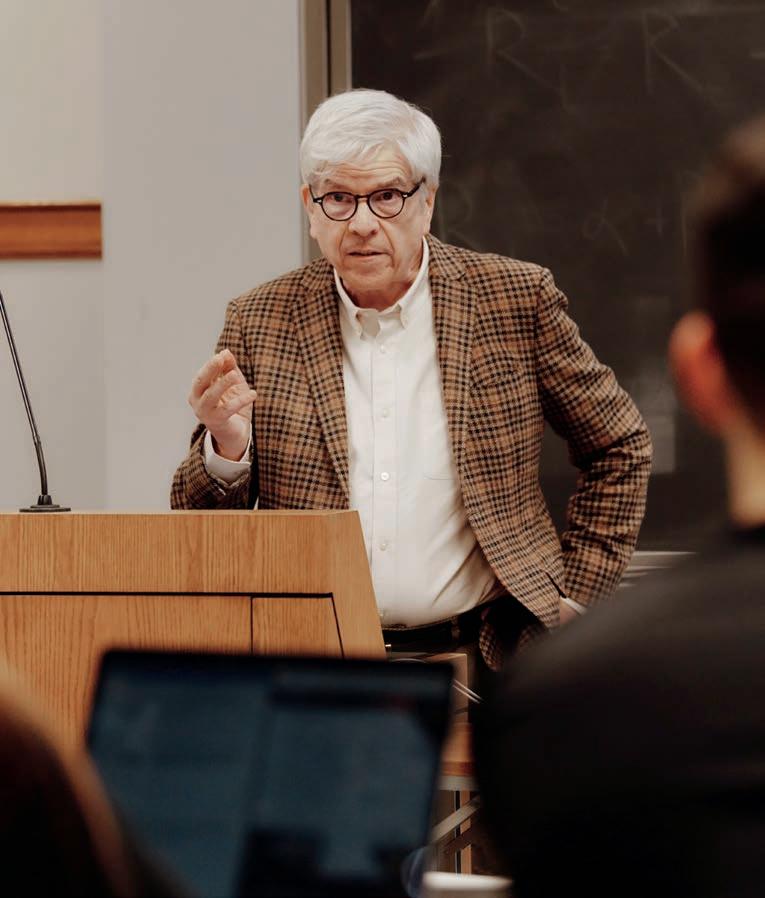
you feel you have to compromise to continue on the path you’re on, just change the path.” His father returned to politics a decade later, when he became secretary of agriculture in Colorado; he served as governor from 1987 to 1999. In a way, family history repeated itself during the 1990s. Paul Romer wasn’t exiled from academia, but he says the prevailing winds—blowing, notably, from economics professors at the University of Chicago, his undergraduate and PhD alma mater—were complicating his path to publication. Some influential economists were throwing cold water on his findings about the growth effects of ideas. “I got to a point where my voice couldn’t be heard. I couldn’t get the word out through traditional journals,” he says. “I hit a roadblock and was forced to either compromise or go do something else.”
Applying his father’s lesson, Romer chose to leave the economics profession and stake out new passions. In 2001, he founded an educational technology company, Aplia, which created online exercises to reinforce classroom learning; he sold the company to Cengage Learning six years later. After that, Romer turned to urbanization, launching the concept of Charter Cities, newly created municipalities in developing nations. He became founding director of New York University’s Marron Institute for Urban Management.
Asked if he felt vindicated by the Nobel Prize, Romer says, “What would make me feel vindicated is if people were more willing to engage with the general questions I’ve been asking.”
Does this mean that economists were unswayed by his growth theory? Hardly, says Michael Kremer, who won a Nobel Prize in 2019 for his research on development economics in lower-income countries. “Paul’s work sparked an explosion in research on economic growth in the ’90s. I think his work was widely appreciated very rapidly,” says Kremer, now teaching at the University of Chicago. He adds that Romer’s insights “form the core” of how economists today think about growth.
Chad Jones, a Stanford University economist who built his own ideas on Romer’s foundation, says Romer “relaunched the whole field of growth” that had languished for decades, but he points out that it’s hard to change the world twice, and Romer’s subsequent work on growth attracted less interest after his groundbreaking 1990 paper. Jones says it’s partly because Romer “didn’t play the academic game”—for one thing, he wrote in a less technical style than other economists. The Stanford professor also notes that some of Romer’s closest and most prominent colleagues at the University of Chicago didn’t buy into his growth theory, which might have, to an extent, tilted the publishing decisions of some top journals. Romer’s sober
2024 CARROLL CAPITAL 19
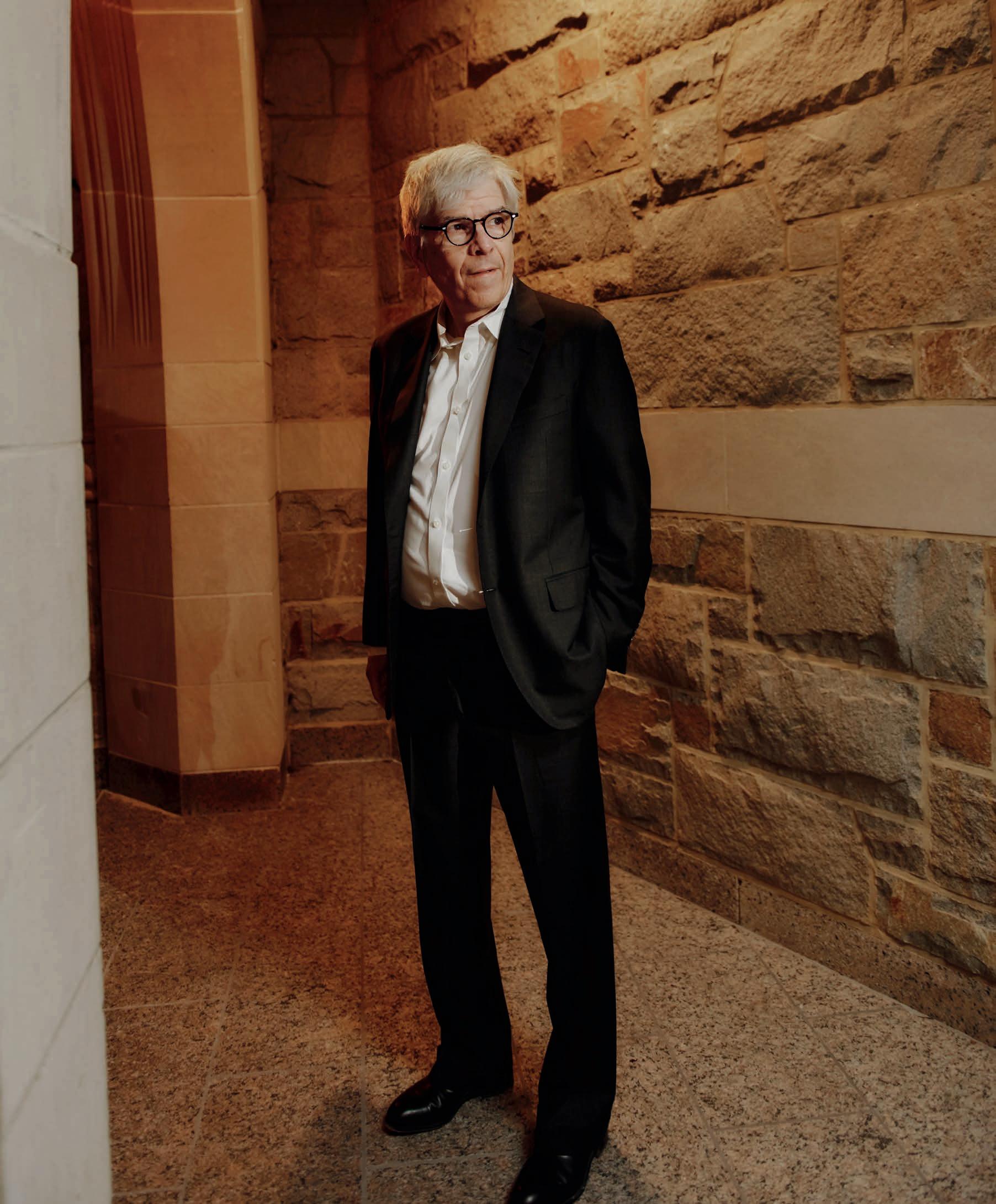
“I don’t think anyone really needs to be anonymous. You wouldn’t trust someone who insisted on meeting with you in a gorilla mask, not wanting to tell you who they are. And you shouldn’t want that digitally either.”
SEIDNER UNIVERSITY PROFESSOR PAUL ROMER
assessment is that economists overall have gone from ignoring the role of ideas to making it a “footnote” in their work.
Romer often says that management professors have been perhaps his most engaged audience, owing to the implications of his research for innovation driven by ideas. One of those academics was Peter Drucker, the father of modern management theory. Another was the Carroll School’s John and Linda Powers Family Dean, Andy Boynton, who first connected with Romer by email in the early 1990s. In 2011, Romer wrote a blurb for Boynton’s book The Idea Hunter: How to Find the Best Ideas and Make Them Happen, coauthored by Bill Fischer; they argued à la Romer that a shortage of ideas inhibits innovation much more than a shortage of things. The Boynton-Romer connection continued with the invitation to address the 2022 Finance Conference, after which the dean recalls asking him, “Would you ever consider working here?” Romer replied, “I might.” After numerous conversations with Boynton and University Provost David Quigley, Romer arrived at the Carroll School in Fall 2023, the first Nobel laureate to serve on Boston College’s permanent faculty. He commutes weekly between Chestnut Hill and New York’s Greenwich Village, where he lives with his wife, Caroline Weber, and their five dogs. Notwithstanding his forays beyond Fulton, Romer has embedded himself in the Finance Department, attending lunch conversations, mentoring junior faculty, and participating in interviews with prospective faculty, who are often surprised to see him. “He’s already made an impact on our department,” says Haub Family Professor Ronnie Sadka, department chair and senior associate dean for faculty. “He’s very interpersonal, very approachable, quick to contribute.”
For his part, Romer calls Boston College “a place where people care about integrity and values. It’s part of why I like the intellectual community here.” It also meshes with his mounting concern about companies, especially in the tech sector, “adopting business models that involve dishonesty, misrepresentation, and exploitation of the customers,” he says. “They feel they’re in these winner-take-all contests where they have to win at any cost or die. And once they win, even if they’ve damaged their reputation, they’re dominant. They’ve cornered the market.” During an interview in April, he cited a plethora of examples, including headlines that day about Google agreeing to destroy billions of data records to settle a lawsuit that claimed it secretly tracked people’s private browsing, even though the company had earlier said it would be impossible to destroy the data. Romer acknowledges that it’s hard to produce data on something as nebulous as an increase in dishonesty, but of course we’re talking about someone with a history of bringing dimly lit truths out of the haze.
On a raw and rainy night in April, Romer is setting out for his coding class, which will take up ways of authenticating digital transmissions. This isn’t theoretical for Romer, whose X (Twitter) account was impersonated with a slightly tweaked handle in 2023; the fake Romer messaged some of the followers, inviting them to invest in a dubious cryptocurrency fund. (Now off social media, Romer continues to blog at paulromer.net). “It could be a social media message, an email, a spreadsheet, whatever,” he explains while taking the stairs four floors down to class. “You can’t trust anything unless you know who’s the person who vouches for it, someone who has a track record of being reliable. You can’t trust the content inside those messages.” His solution, easier said than done, is for the sender to put a “digital signature” on the message that the recipient can verify, which reveals the sender’s identity and ensures that no one has tampered with the message.
This is his ambitious project as founding director of the Center for the Economics of Ideas, where Romer, with help from Business Analytics Professor Sam Ransbotham, is working on practical solutions. The chief goal is to develop user-friendly software that would enable any reader to sign and verify files they receive; he’s testing out the software partly by having students work on prototypes. But as Romer begins discussing authentication during class, he gets pushback from some students who want to keep open the possibility of anonymity, which a digital signature would undo. One young man remarks that whistleblowers, for example, need to be anonymous “or else they’re vulnerable to attack.” Romer responds that false accusations by trolls and nameless whistleblowers have become a worrisome trend in academia and other circles. “I don’t think anyone really needs to be anonymous,” he says. “You wouldn’t trust someone who insisted on meeting with you in a gorilla mask, not wanting to tell you who they are. And you shouldn’t want that digitally either.” But the students—members of the digital generation—seem at ease with the gorilla masks.
For all his concerns (including what he sees as a growing disconnect between corporate power and social benefit), Romer’s empirical optimism remains intact. He always returns to the possibilities of progress and the endless discoveries waiting to happen. That confidence comes through in his moonshot for digital authentication, which takes on fuller significance when you consider how critical digital messaging is to research and the transmission of ideas that propel growth. Romer’s new mission will surely invite skepticism, but his dean says it would be foolish to underestimate him. “He’s changed the world once with his discoveries about ideas and growth,” says Boynton. “Can he do it again, in the digital sphere? I’m betting on it.”
2024 CARROLL CAPITAL 21
IN ANY WAY, SHAPE, OR FORM
Students in the Carroll School of Management spend their years on the Heights charting their own unique paths to adulthood. The University isn’t just standing on the sidelines cheering them on. From academics to extracurricular life, Boston College is shaping the whole experience through formative education.
BY JACLYN JERMYN PHOTOGRAPHS BY KELLY DAVIDSON
O
ON ANY GIVEN WEEK DURING HIS SENIOR YEAR, AIDAN SAID ’24 COULD BE FOUND JUGGLING CLASSES and homework for his two management concentrations plus the theology major he tacked on junior year, carrying out his duties as part of the Air Force Reserve Officers’ Training Corps, hanging out with friends, and somewhere in there also trying to get some sleep. ¶ Said didn’t mind what he refers to as the “go, go, go” pace of his days, but his evening routine of meditation, prayer, and reflection was a nonnegotiable in his to-do list. “That’s the way I digest my day,” he says, explaining that the process of reflection often helped him make sense of his place in the world amid competing priorities. “When you have all these different ideas that kind of clash, it always leaves you reverberating.” ¶ For many, college is a time of great personal growth— students across the globe experience these moments of clashing ideas—but it is the
22

SAID ’24
AIDAN
ability to feel that reverberation, the point where experiences intersect meaningfully, that is integral to a Boston College education. If these years are so formative to students, how exactly is Boston College shaping the college experience? The answer revolves around a concept known as student formation, or “formative education.”
“We don’t own the market around formative education. We’re not the only place that students grow and develop and learn,” says Mike Sacco, executive director of the Center for Student Formation and the Office of First Year Experience. “We’re just a bit more intentional. We have an emphasis on it.”
The broader concept of formation comes from St. Ignatius of Loyola, founder of the Jesuit order, and his way of using his own intellect and reasoning to reflect on his personal experiences. Ignatius saw God as a teacher and himself as a student of the world formed in God’s image—he also envisioned the Jesuits as a religious order dedicated to service and teaching.
Even with its faith-based origins, formative education has become part of the Boston College DNA that touches all spheres of life and learning, religious or secular. “All are welcomed and the University is not a church,” says John T. Butler, SJ, the Haub Vice President of the Division of Mission and Ministry. “Yet, the [Jesuit Catholic] ethos springs from the notion that life is a gift and it’s meant to be lived.”
With so many fields of study, service opportunities, clubs, teams, and events to pick from, Boston College emphasizes a choose-your-own-adventure approach to finding meaning during these formative years. The three primary facets of student formation are intellectual, spiritual, and social growth, but these dimensions can, and almost certainly will, interweave as students explore their options.
Andrew Namkoong ’24 appreciates that the University’s core curriculum allowed him to traverse subject areas from epistemology to business law. “Through the core, you become not just specialized but a well-rounded individual,” he says. He shares a similar sentiment about Portico, the required first-year management course that weaves in threads of ethics, philosophy, and social responsibility. That class is part of the reason he later decided to pursue a philosophy major in addition to his finance concentration. “I didn’t know that philosophy could cross over into the business world,” he explains. Around 50 percent of Carroll School students complete an additional major or minor in the arts and sciences. It’s an opportunity to discover surprising connections. For Namkoong, who describes himself as “a big yapper,” the appeal of discussion-based classes like Portico stretched beyond the course material. There he was encouraged, and even expected, to engage vocally with his new peers.
Said chose to blend his intellectual and spiritual growth when he added a theology major to his concentrations: finance, and accounting for finance and consulting. “A lot of what you’re doing
in theology is the same as what you do in business—you’re trying to find a precedent,” he says. “If I want to know something about a company, I will look back at their old financial statements. If I want to know something about the Book of Exodus, I’m going to look at the comments from theologians about Exodus.”
It was through his theology classes that Said came to better understand his own spirituality. After attending a Jesuit high school in Detroit, he was no stranger to Jesuit practices like the Examen, a daily reflection on one’s experiences, but classes including “Buddhism and Christianity in Dialogue” helped Said rethink prayer and reflection through mindfulness. “I view the world through my practice. I do my meditation and my examination of conscience and then pray,” he says. For Said, this routine applies as much to rehashing his performance on an exam as it will to his post-graduation role as an Air Force Tactical Air Control Party Officer. “I’ve had time to think about what this means for me,” he says about his next steps. “It’s daunting but I feel prepared.”
While some students find that their formation is intertwined with their religion, others with no religious affiliation still seek something that helps form them as whole persons. “Although not everyone belongs to a faith tradition, most, whether they know it or not, function in some sort of religious structure, ritual, or symbolic expression,” says Butler. “All of our students want to transcend themselves and experience things greater than who they are and where they came from.”
By virtue of being a Jesuit university, Boston College’s educational and spiritual influences loom large in the formative education picture, but the process would be incomplete without social elements. “We’re trying to inform and educate in the classroom, first and foremost,” says Sacco, “but we also give students experiences to help them grow socially with leadership, self-awareness, and social responsibility.”
Irfane Soumanou ’25, who studies finance as well as computer science, got involved with Boston College’s African diaspora dance group, Presenting Africa to U (PATU), as a way to meet more people on campus. “It was my stress reliever. In the studio, dancing was all I thought about. I wasn’t worried about my other preoccupations. I was having fun doing something I love with my chosen family,” she says, adding that she grew as a dancer and as a team player through PATU.
Namkoong cemented his commitment to social responsibility during his internship with Metro Housing Boston. As part of
AIDAN SAID ’24
“A lot of what you’re doing in theology is the same as what you do in business—you’re trying to find a precedent.”
24 CARROLL CAPITAL 2024
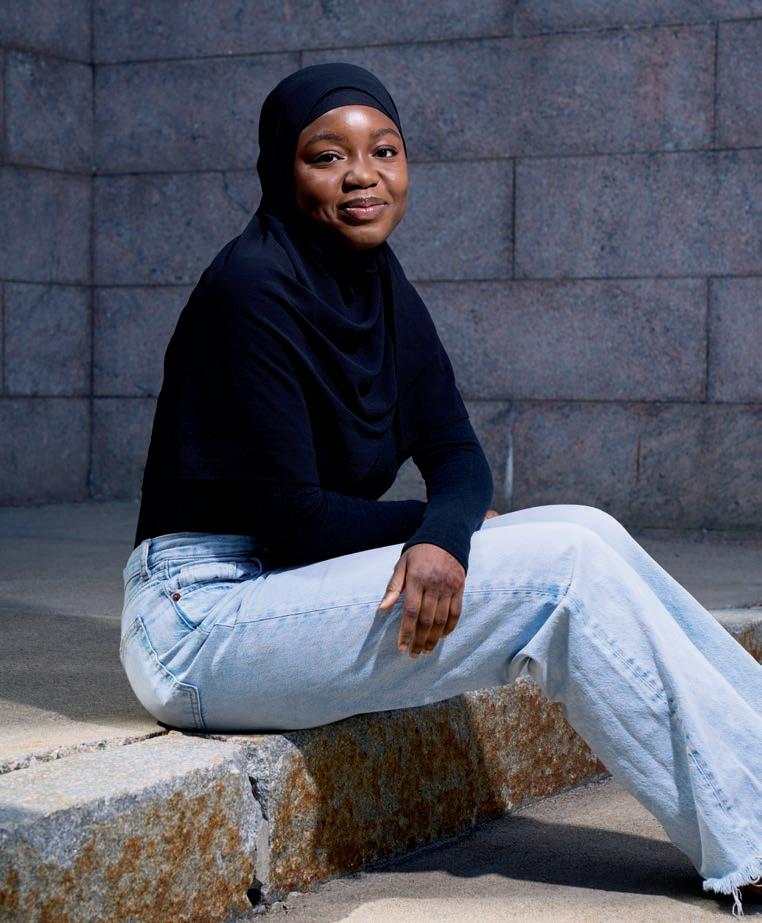

“We’re thinking about moving forward all the time, but it’s really important to acknowledge how far you’ve come.”
the Joseph E. Corcoran Center for Real Estate and Urban Action summer internship program, he spent 10 weeks working with the nonprofit, which helps greater Boston residents achieve housing security. “I remember talking with the CEO about not being too idealistic,” Namkoong says. “I’m not going to solve the affordable housing crisis in Boston. It’s a process. If I help a family get a home, that’s a great step.” In his internship with real estate company Greystar the following summer, he was no longer working in low-income housing, but he held onto that lesson. “You want to create shareholder value, but I also want to create value for everyone involved,” he says, adding that he hopes to bring that mindset to his continued work with Greystar as an investment and development analyst.
Sacco highlights that one of the biggest themes of formative education is to have students “understand themselves at a deeper, more honest level.” In doing so, students must pay close attention to how they feel. It can be a vulnerable journey to make alone, but the University’s rich culture of retreats and group discernment makes it easier for students to heed what Sacco refers to as “the call to take care of each other,” by sharing space and personal stories with their peers.
Soumanou, who is Muslim, has participated in both the Black Women Matter and 48hours retreats. She explains that the experiences allowed her to be more open about her college
“Through the core, you become, not just specialized, but a well-rounded individual.”
journey so far. “We’re thinking about moving forward all the time, but it’s really important to acknowledge how far you’ve come,” she says. When she spots students from her retreats on campus, she makes a point of greeting them. “I’m proud of how far they’ve come, too,” she adds.
Formative education is, at its heart, a group project. “All who work and participate within a university community are educators, and thus participate in the formative process,” says Butler. While it’s important that professors and academic advisors cultivate meaningful dialogue and big-picture thinking with students, the beauty of wisdom is that it sometimes comes from unlikely sources—Said mentions his roommates, Soumanou talks about her dance teammates, and Namkoong even name-drops Boston College dining hall staff as making a mark on their college experiences.
The University may provide the framework for these opportunities, but ultimately it’s up to the students themselves to embrace their formative education and carve a path forward. “My parents instilled in me this mindset of treating every opportunity as something positive—treating it as a yes,” Namkoong says. “Without that mindset, I wouldn’t have discovered philosophy as a major, I wouldn’t have interned in affordable housing.… I wouldn’t have had all these experiences that have made me who I am today.”
2024 CARROLL CAPITAL 25
IRFANE SOUMANOU ’25
ANDREW NAMKOONG ’24
THE CHANGEMAKERS
RUNNING BUSINESSES RANGING FROM STARTUPS TO FORTUNE 500 COMPANIES, THESE NINE CARROLL SCHOOL ALUMNI CEOS ARE SHAKING UP THEIR INDUSTRIES THE BOSTON COLLEGE WAY.
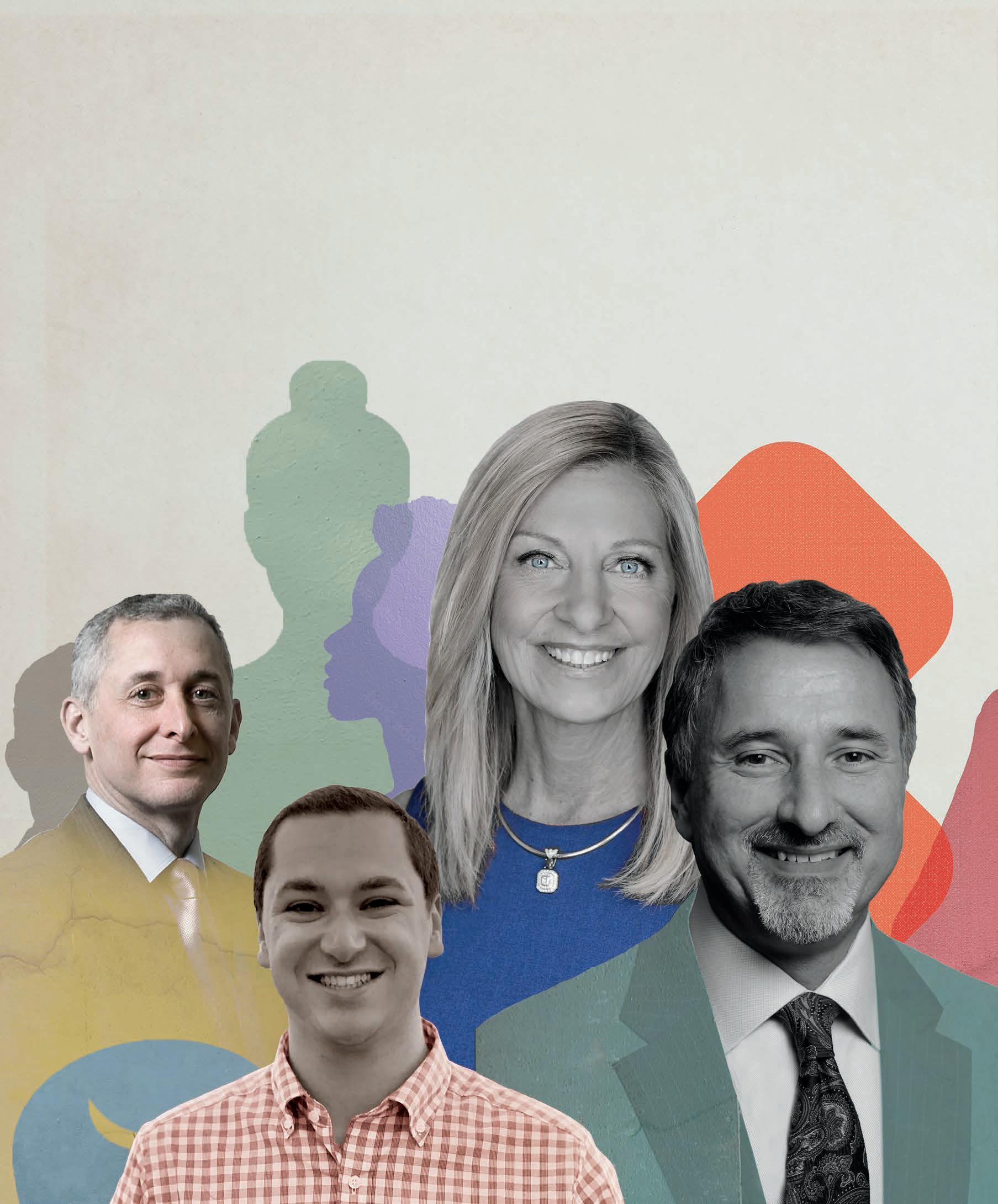
 BY ABANTI AHMED ’25, WILLIAM BOLE, MASON BRAASCH, AND JACLYN JERMYN
PHOTO-ILLUSTRATIONS
BY DANA SMITH
PORTRAIT ILLUSTRATIONS
BY ABANTI AHMED ’25, WILLIAM BOLE, MASON BRAASCH, AND JACLYN JERMYN
PHOTO-ILLUSTRATIONS
BY DANA SMITH
PORTRAIT ILLUSTRATIONS
26
BY KAGAN M c LEOD
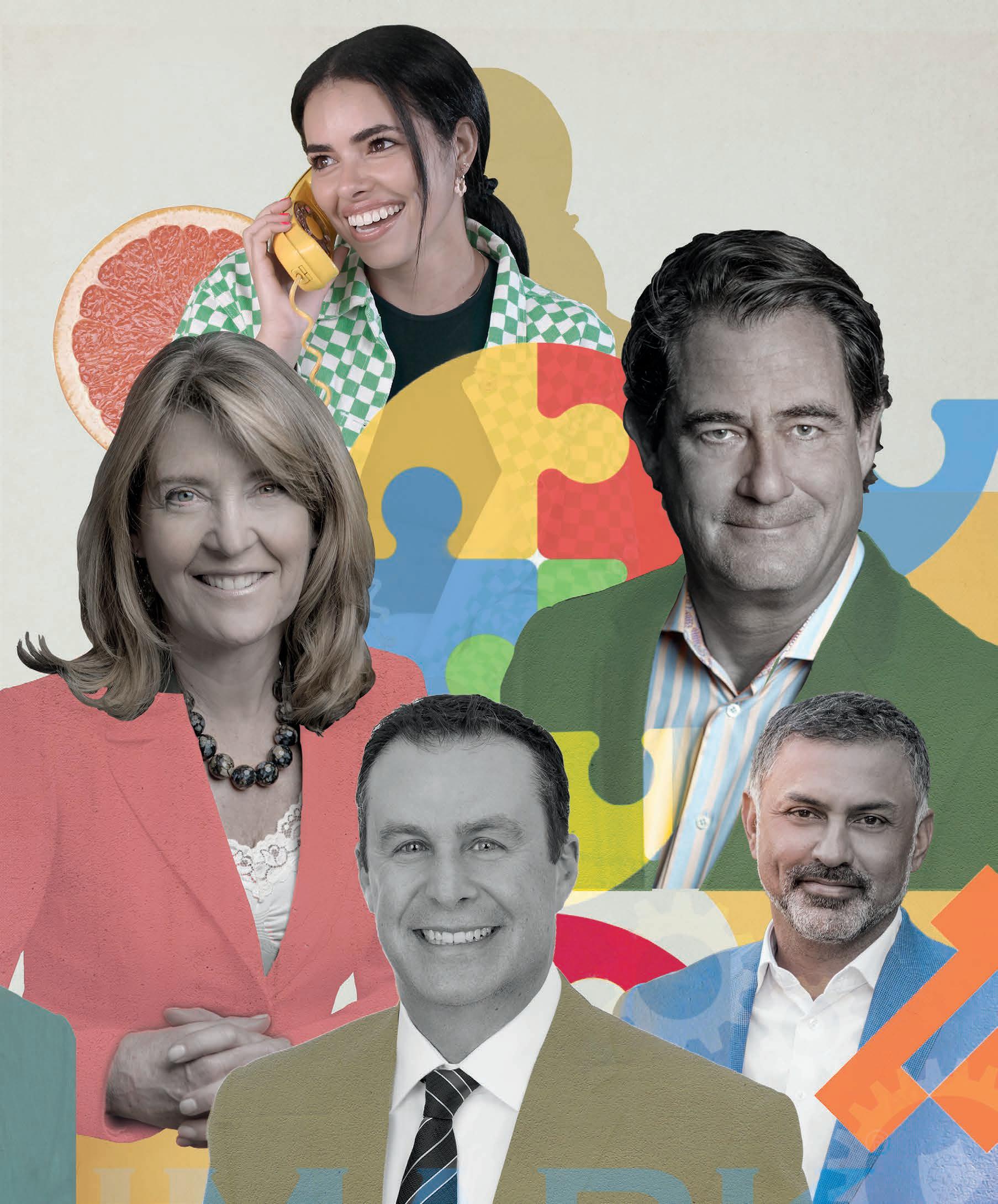

KAREN LYNCH ’84
PRESIDENT AND CEO, CVS HEALTH
Early in her career, an executive told Karen Lynch to “sit in the back, not at the [boardroom] table, because women just take up space.” Now as President and CEO of CVS Health, Lynch leads the sixthlargest company in the Fortune 500—the highest ranked US corporation ever run by a female CEO. In that role, Lynch drives a companywide focus on helping 100 million Americans along their journey to better health. Lynch’s own journey wasn’t an easy one. After losing her mom to suicide when Lynch was 12 years old—and later losing her aunt, who helped raise her, to lung cancer—Lynch has made it her mission to improve access to both physical and mental healthcare resources. During her time on the Heights, she was known among classmates for her relentless work ethic, and she went on to work in leadership roles at healthcare insurance companies like Aetna and Cigna. Since becoming CVS Health CEO in 2021, she has expanded virtual behavioral health services, which helped increase psychiatric telehealth appointments from 9,000 to a remarkable 30 million. In addition to overseeing the largest vaccination drive in US history during the Covid-19 pandemic, Lynch has become a prominent advocate for women in the workplace. In her new book, Taking Up Space, she writes: “I want to share how I have overcome barriers, used my voice, and created opportunities to make a difference.”
28 CARROLL CAPITAL 2024
In the banking industry, René Jones has stood out for his calm and steady approach to managing problems, a trait that served him and M&T Bank well when two bank failures in 2023 sent tremors through the industry. The CEO stands out for another reason: He encourages everyone to embrace and tell their story. His own story begins with his father, a Black sergeant during World War II who served under General George
RENÉ JONES’86, P ’25
Patton when the Army was still segregated. Jones has shared his recollections of growing up in a biracial family as the youngest of seven children, which taught him much about how people form stereotypes. He says M&T, headquartered in Buffalo, New York, highlights other stories to foster common ground and “tackle challenges facing our communities” within the organization. These include acknowledging
“members of our Black and Brown communities who are creating positive change and inspiring others,” he says. As one of only four Black CEOs in the Fortune 500, Jones oversees a variety of initiatives aimed at promoting diversity, including mentorship, meaningful professional development programs, and efforts to put diverse talent on promising career paths. “For me, Boston College was one of the first places to lift
me up,” says Jones, adding that he encountered values on the Heights, including discernment of one’s gifts and talents, that have helped steer him as a leader. Today, Jones is a Boston College trustee. He and his wife, Brigid Doherty ’96, P ’25, also serve as cochairs of Soaring Higher: the Campaign for Boston College, which is their way, he says, of helping BC “continue its long tradition of lifting up others.”
CHAIRMAN AND CEO, M&T BANK
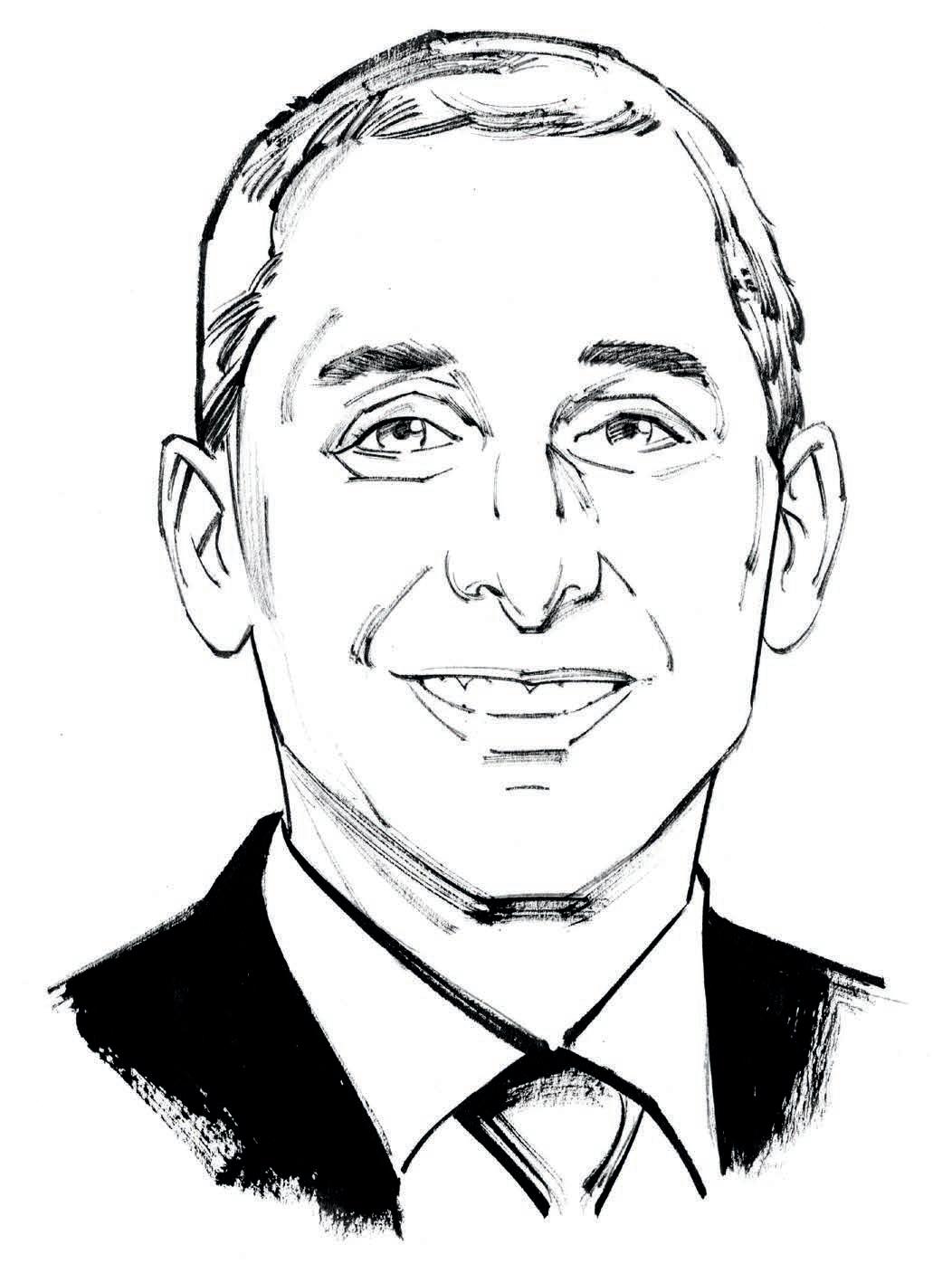
2024 CARROLL CAPITAL 29
BRETT HEFFES ’89
As a leader in the booming resale sector, Winmark Corporation has a whole slew of competitors, including other resellers as well as traditional retailers. But when asked about the competition, Winmark CEO Brett Heffes ’89 gives a surprising answer. “We believe our biggest competitor is not one of those,” he clarifies. “It’s the landfill.” That comment offers a glimpse into the world of Winmark, which has more than 1,300 franchised outlets, and into the thinking of an Eagle. Those franchises, under different store names including “Play It Again Sports” and “Plato’s Closet,” resell everything from lacrosse sticks and blue jeans to electric guitars—items destined for the landfill before the stores buy them secondhand and keep them in circulation, reducing waste. The environmental and economic benefits are clear enough, but Heffes says the 30-year-old company only recently came to fully realize that its mission is sustainability. He credits a conversation he had five years ago with University President William P. Leahy, SJ, who quoted the Book of Proverbs: “Where there is no vision, the people perish.” A member of Boston College’s Board of Regents, Heffes jotted down those words, ruminated on them, and crafted a new vision for Winmark together with his team. Now, each store extends the life of 140,000 used items per year, on average. “That’s our business,” says Heffes, who studied finance at the Carroll School and says he learned to think broadly at Boston College. “Jesuit principles, the liberal arts, critical analysis—you just package all of that up, and you’re ready to go,” he says.
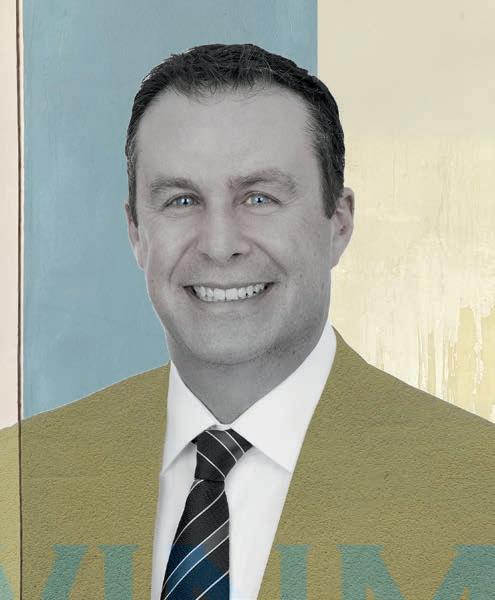

ERNIE HERRMAN ’83
CEO AND PRESIDENT, THE TJX COMPANIES, INC.
Ernie Herrman credits the late Eugene Bronstein, a Carroll School marketing professor who had previously served as a retail executive, with opening his eyes to the industry of merchandising. “The idea of not just picking out apparel, but also the combination of analytics, creativity, visual, and people skills, it was all very appealing to me,” he says. Now CEO of The TJX Companies— home to brands like T.J. Maxx, Marshalls, and HomeGoods— Herrman originally joined the company in 1989 when there were only 200 stores. “I am extremely proud to have ‘grown up’ at TJX,” he says of his start in merchandising roles. As his career evolved, so did the organization. Herrman has been the Chief Executive Officer since 2016, overseeing more than 4,900 stores across
nine countries for the Fortune 100 company, with more than $50 billion in annual sales. Beyond expansion, Herrman has his eye on some ambitious corporate goals, which include “how our corporate responsibility work has evolved,” he says. TJX is looking to achieve net-zero greenhouse gas emissions in its own operations by 2040 and divert 85 percent of operational waste from landfills by 2027 through initiatives like upgrading stores with LED technology, installing solar panels on distribution centers, and running operational waste recycling centers. “We tend to be a quiet company about our work in these areas, because we’ve created a culture where we find more value in doing the work than in talking about it,” Herrman says. “That’s always been refreshing to me.”
30 CARROLL CAPITAL 2024 CHAIR AND CEO, WINMARK CORPORATION
Katie Diasti discovered her passion for menstrual equity while volunteering at Boston women’s shelter Rosie’s Place through Boston College’s PULSE service learning program. Among her responsibilities there, Diasti helped distribute menstrual products to residents. Moved by this experience, she used her position as copresident of the Residence Hall Association to start an initiative to supply free menstrual products in bathrooms across campus. The initiative is still going strong, but these days students can grab organic cotton tampons and biodegradable bamboo pads from Viv for Your V, the sustainable period care company Diasti started during her senior year. As Viv’s CEO, Diasti’s mission is to provide period products that are less harmful to the environment, while also pushing back against the stigma surrounding menstruation. “When you walk down the period care aisle, it feels like a sterile, anxious place,” she says. “I wanted to bring approachability, as well as sustainability, to period care.” Growing up in an Egyptian American family, Diasti was inspired by the important women in her life. She was raised by a single mom, an Egyptian immigrant whose own mother was denied an education because of her gender. Now, Viv leverages social media platforms like TikTok to create educational content for a primarily Gen Z and millennial audience— the comment sections of Viv’s online videos are often flooded with questions from young menstruators. “I wish I had that when I was a kid,” she says. “I want to ensure that education always stays a part of the Viv brand.”
KATIE DIASTI ’19
FOUNDER AND CEO, VIV FOR YOUR V

2024 CARROLL CAPITAL 31
CINDI BIGELOW ’82
When Cindi Bigelow is not overseeing the blend of her grandmother’s original recipe, traveling around the world to personally meet the farmers who grow the tea’s ingredients, or spending time with her family, you can count on her to be enjoying a fresh cup of tea—one of the more than 2 billion that Bigelow Tea produces each year. For Bigelow, president and CEO of the company, there is only one thing more important than tea: family. Luckily for her, the two are very much
intertwined, as her family has been operating Bigelow Tea since it was founded by Ruth Bigelow, Cindi’s grandmother, in 1945 (the original recipe remains to this day a family secret). Now, as the third-generation CEO, Bigelow says that honoring this heritage is the foundation of who she is as a leader. “You’re allowed to have your own style and your way of operating, but I never lose sight of what my grandmother did to get this company going and the hurdles that she had to get over,”
she says. While she has spent the majority of her career working alongside family, Bigelow is familyoriented outside of the office, too, and is a firm believer in the importance of a healthy work-life balance—a lifestyle that she established during her time at Boston College. “I think one of the greatest things about BC students is that they work hard, but they also have a rich life outside of the classroom,” she says. “That has always been important to me, and I still try to live that life today.”
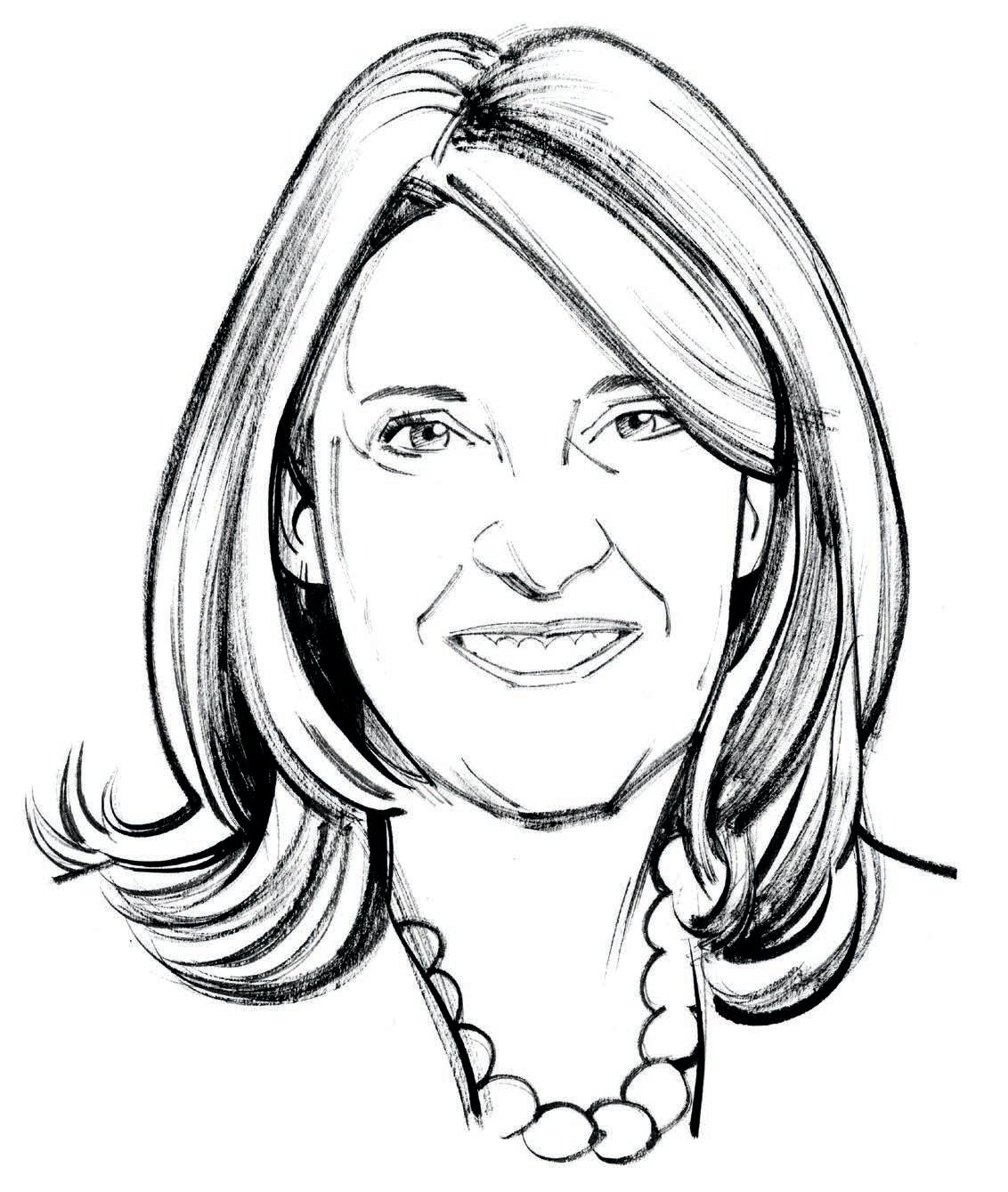
32 CARROLL CAPITAL 2024 PRESIDENT AND CEO, BIGELOW TEA
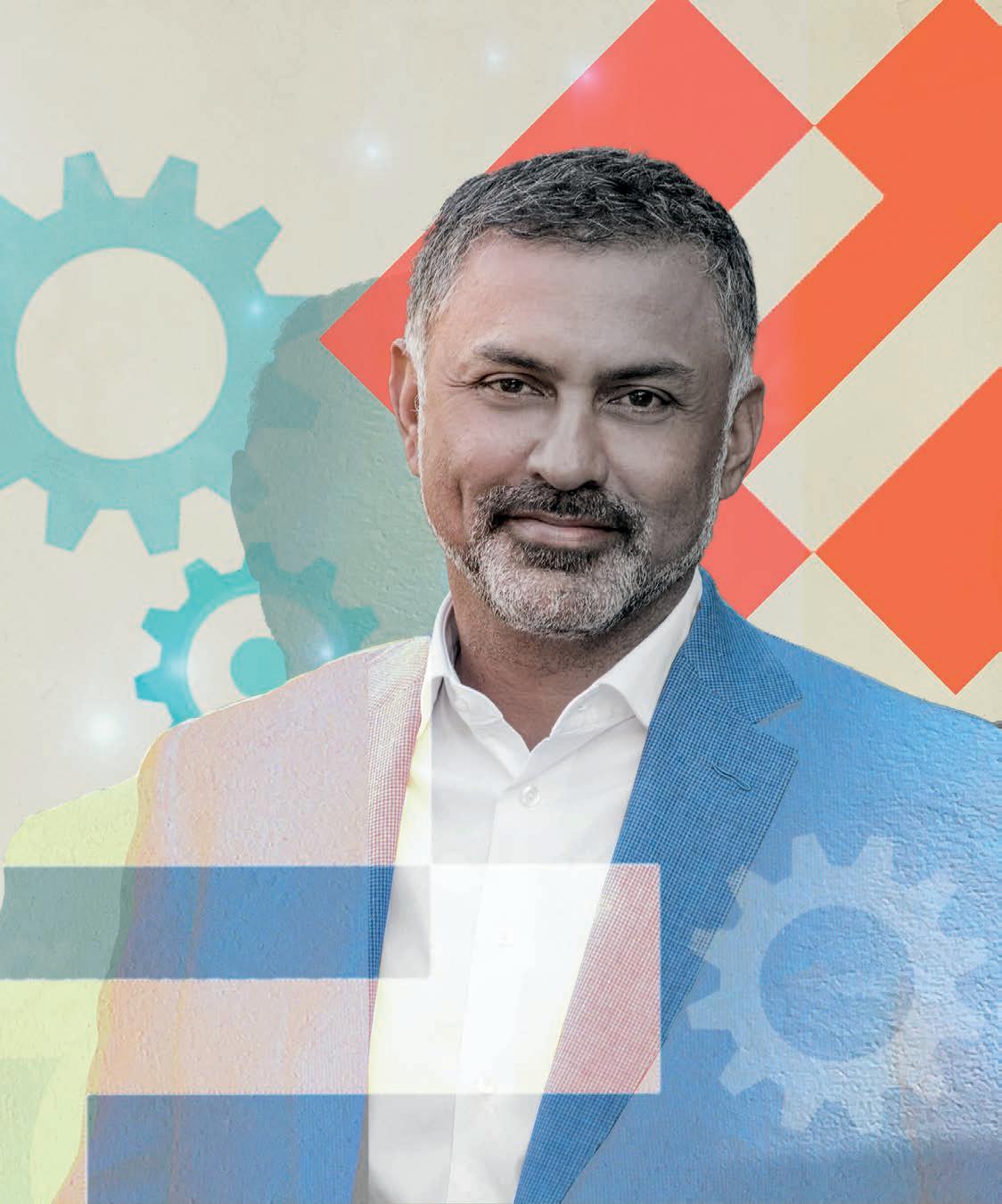
NIKESH ARORA,
CHAIRMAN AND CEO, PALO ALTO NETWORKS
“There’s really no logical line running through my career,” says Nikesh Arora, whose senior executive roles have ranged from chief business officer of Google and chief marketing officer of T-Mobile to president and CEO of SoftBank. And when the cybersecurity giant Palo Alto Networks was considering him for the top job, Arora made one thing clear to the board: “I know nothing about cybersecurity.” That was in 2018, and since then, Arora has solidified Palo Alto’s position as the world’s leading cybersecurity firm, overhauling product lines and personally going out to the market to show the products to corporations and governments worldwide. Arora wasn’t lacking confidence when he emphasized his dearth of cybersecurity experience. He was letting the board know that, as an outsider, he intended to disrupt the business. “That’s the history of innovation,” he says, noting that Uber’s founders weren’t taxi drivers, Jeff Bezos hadn’t sold books pre-Amazon, and Elon Musk had never fired off rockets. “In Silicon Valley, I run into people every day who are doing things they never did before.” Arora gives credit to faculty members, including Professor and Griffith Family Millennium Chair Hassan Tehranian. Before seeking out the MSF, Arora was accepted into the Carroll School’s PhD program in finance. Tehranian helped him think through the choices, leading him to conclude that the best route for him would be the MSF, which enabled Arora to seize new career opportunities. “When professors like Hassan take a real interest in students, that’s when the faculty have the longest-range influence in your life,” he says.
2024 CARROLL CAPITAL 33
MSF ’95
Keith Wargo spent nearly three decades working in investment banking for institutions like Goldman Sachs and Deutsche Bank before becoming president and CEO of Autism Speaks, the largest nonprofit autism advocacy organization in the US. While it might seem like a drastic career change, for Wargo the choice felt very personal: His adult son AJ is autistic. When AJ was first diagnosed, there were few autism resources available, he explains. Now there are many, thanks in large part to Autism Speaks, which aided more than 1.6 million autistic people and their families last year. Wargo believes that his drive and expectation for excellence from his days in the private sector have helped him work on key challenges—for example, employment for adults with autism. “Having a meaningful job provides a paycheck, but also opportunities to connect with other people, to continue to grow and develop skills,” he says, noting that these workers also help fill employment gaps for companies. Wargo, who became CEO in 2021, got one of his first tastes of leadership as a Boston College resident assistant, where he learned the importance of mission and strategy. “When I was being asked for help, [using] BC’s mission as my guidepost was powerful,” he says. “My whole BC experience provided me with a sense of who I was. It set me up to figure out the rest over the past 30-plus years.”
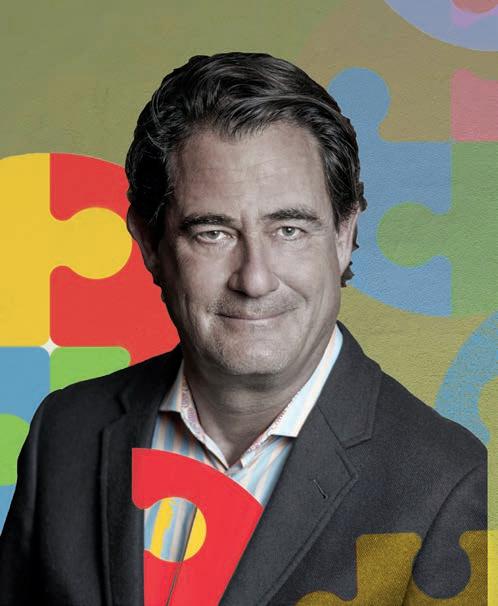
KEITH WARGO ’90, P ’24

MATT GIOVANNIELLO ’18
COFOUNDER AND CEO, FRENALYTICS
Matt Giovanniello was 12 years old when his grandmother suffered a stroke that damaged her cognitive abilities. Frustrated with the memory recovery tools she was using, Giovanniello made a slideshow of important family memories, calling it “Grandma’s Ultimate Challenge,” to help her instead. Motivated by the experience, Giovanniello cofounded the software startup Frenalytics in 2013, using a similar concept to rethink rehabilitation for patients with brain injuries. But as schools went remote during the pandemic, he saw a need for tools to assist special education students with online learning. The company—which recently established a partnership with the nation’s largest school district, the New York City Public Schools— now offers a collaborative and
personalized way for teachers, parents, and other educational staff to monitor the progress of individual students. The shift to an education-focused business model has been rewarding, says Giovanniello, “from a do-good aspect and for the growth of our company.” While Giovanniello has worked on Frenalytics since high school, his time at Boston College was integral to making the company a success. He credits the Edmund H. Shea Jr. Center for Entrepreneurship for shaping his entrepreneurial goals and now serves as a mentor for the Accelerate@Shea accelerator program. “It’s inspiring to work with student founders who are in the same place that I was a few years ago,” he says. “As much as I am teaching them, I’m always learning something from them, too.”
34 CARROLL CAPITAL 2024
PRESIDENT AND CEO, AUTISM SPEAKS
Disabused
When helping hands are picking the elderly’s pockets.
BY PATRICK BOLE ’24
As the ranks of older Americans have swelled, so has the reality of elder financial abuse. The problem is hard to police because the perpetrators, including family members and caregivers, are often close to the victims. Some 30 states have stepped up with laws that deputize financial professionals to report suspicious activity, granting them new powers to protect elderly clients. Carroll School Assistant Professor of Finance Hanyi (Livia) Yi and two colleagues have studied the effects of these statutes, presenting their findings in the Journal of Financial Economics. The upshot: Deputization works. With their new prerogatives, investment advisors, brokers, and others were able to intervene early and prevent abuse by temporarily halting questionable transfers from client accounts. In addition, the deputies told family members and others about the laws, adding to the deterrent effect— as shown in a key finding that the number of these crimes reported to authorities dropped significantly in the 30 states but not others. The results indicate that the laws “were successful in reducing the abuse of seniors, especially for those who are most socially isolated,” wrote Yi and coauthors Bruce Carlin and Tarik Umar of Rice University.

35 ILLUSTRATION BY BRYCE WYMER Community P.36 Research P.40 Impact P.42 Investments P.44
P.46
Distinctions
Assets
Assets Community Special Operation
VETERANS FIND COMMUNITY AND SUPPORT AS THEY MAKE THEIR WAY TO THE MBA.
BY MASON BRAASCH
On a Saturday in mid-November, Boston College football fans were getting into the pre-game spirit around campus. As they tossed footballs and grabbed hot dogs from their grills, Carolyn Ballinger, MBA ’25, stood by the Boston College Veterans tent with her own tailgating accessory: puppies. Unlike the boisterous Eagles fans, the puppies were calm while droves of students and alumni stopped by to meet them. ¶ In 2022, Ballinger and her husband started Northern Pines Canines, a farm in New Hampshire that ethically breeds and trains dogs to fulfill the needs of the military special operations and law enforcement communities. The tailgate was a priceless training environment for these future working dogs, but Ballinger says it was also a step toward achieving her goal of giving back to the veteran community as an entrepreneur.
“Opportunities like bringing the dogs to campus are a remarkable reaffirmation that I made the right choice in community and program,” says Ballinger. After 17 years of active service in the Marine Corps and Navy, she entered the classroom last fall as a full-time MBA student to learn how to best run her company. While the knowledge she has gained within the classroom so far has been integral, she adds that it’s the support she’s felt from the University as a whole that has shown her the real value of a Boston College education.
For some veterans, pursuing an MBA can be a practical way to
translate their military experience into the civilian workforce, but the advantages go beyond opportunities for professional development. “Quite a few veterans choose to go back to school after leaving the service,” Ballinger says. “It can be a way of giving yourself time to reassimilate into normal, everyday American life as opposed to knowing your life may be in danger nonstop.”
The difficulty of this transition, however, can be shocking. Evan Nelson, MBA ’25, left for Marine Officer Candidates School just days after receiving his undergraduate degree in 2019. By the
time he was 23 years old, he had quickly risen within the ranks and was managing more than 30 people as a platoon commander and officer in charge. After leaving the service in 2023, he came to Boston College hoping to maintain similar levels of responsibility in a civilian workplace.
Nelson expected the challenge of navigating the unfamiliar MBA curriculum, but while steering through accounting exams and group projects, he had to relearn how to be a part of the civilian community as well. “There are a lot of communication barriers that you don’t even realize you have until you get out. There are customs, courtesies, and traditions that you get used to,” he says. “It is a conscious, mental effort to readjust.”
Student veterans at Boston College don’t have to endure this transition alone. With a substantial community on campus—150 veterans were enrolled in Fall 2023, including 45 MBA students—the University has made a conscious effort to meet the needs of these students. Since 2021, Mike Lorenz has been the assistant director for military and veteran support, working exclusively to ensure that all veterans on campus feel seen. “I think it’s easy for veterans to feel lost, especially when you go from the military to higher education,” says Lorenz, an Air Force veteran. “It’s my job to help them find community here and get the resources they need.”
Lorenz’s role spans from assisting with routine paperwork for financial programs to working with departments across campus to ensure veterans’ needs are considered. He also facilitates

PHOTOGRAPH BY CHRISTOPHER CHURCHILL 36 CARROLL CAPITAL 2024

veteran social events on campus, including helping Ballinger coordinate the logistics of bringing her dogs to the tailgate last fall. “The greatest ability of my job is that I can give veterans personal attention,” Lorenz says.
This attention to individualized needs made a big difference in Colleen Rezabek’s decision to pursue an MBA at the Carroll School. Rezabek, MBA ’25, recalls that during one of her admission interviews, her student interviewer, a second-year MBA candidate, was also a veteran. “It put me in my comfort zone because it made me feel like BC got it,” says Rezabek, who previously served as the HR officer for a US Army expeditionary military intelligence battalion. “It made me confident that they understood how my experiences can translate to what I am learning in the classroom.”
Boston College has a long history with the veteran community, with more than 3,000 alumni veterans. “Even Ignatius was a veteran,” Lorenz points out, referring to St. Ignatius Loyola, founder of the Jesuits. While raising awareness of this tradition, Boston College has also expanded the resources available to students who have served.
The basic aid for qualifying veterans is through the Post-9/11 GI Bill, but the program only covers expenses at the in-state rate of public institutions. For that reason, the University joined the Yellow Ribbon Program, a partnership in which institutions of higher education can add funding and have it matched by the Department of Veterans Affairs. Boston College has continued to increase its support through Yellow Ribbon, now covering the full costs of tuition for those enrolled in fulltime MBA, BC Law, and graduate social work programs, as one way of encouraging veterans to apply to those programs.
For students like Ballinger, who hopes to continue carving her own path as a business owner, or those like Nelson and Rezabek, who want to build upon their military experiences to pursue careers in management, an MBA from the Carroll School is invaluable. But Marilyn Eckelman, the Carroll School’s associate dean of graduate programs, says veterans are just as important to the MBA experience. “So much of an MBA education is about learning from your peers,” she says. “Veterans have seen things and experienced things that add to the classroom and community.”
“Quite a few veterans choose to go back to school after leaving the service. It can be a way of giving yourself time to reassimilate into normal, everyday American life as opposed to knowing your life may be in danger nonstop.”
Carolyn Ballinger, MBA ’25
“There’s a feeling of appreciation on the part of veterans, who look at their education as something they earned from their service,” says Ballinger. “You risk a lot to earn that benefit, and you can see the value that this education is going to provide.”
2024 CARROLL CAPITAL 37
Assets Community
ACCELERATING
IT ALL BEGAN WITH A BC VENTURE COMPETITION. NOW, THE ALUMNI ARE “PAYING IT FORWARD” TO STUDENT ENTREPRENEURS.
BY MARGIE ZABLE FISHER ’89
In 2009, Tom Coburn ’13 was a freshman in Shaw House, studying biology and theology with an eye toward medical school. His roommates were excited about what was then called BC VC, a venture capital competition offered through the Carroll School of Management, and they convinced Coburn to participate with them in the
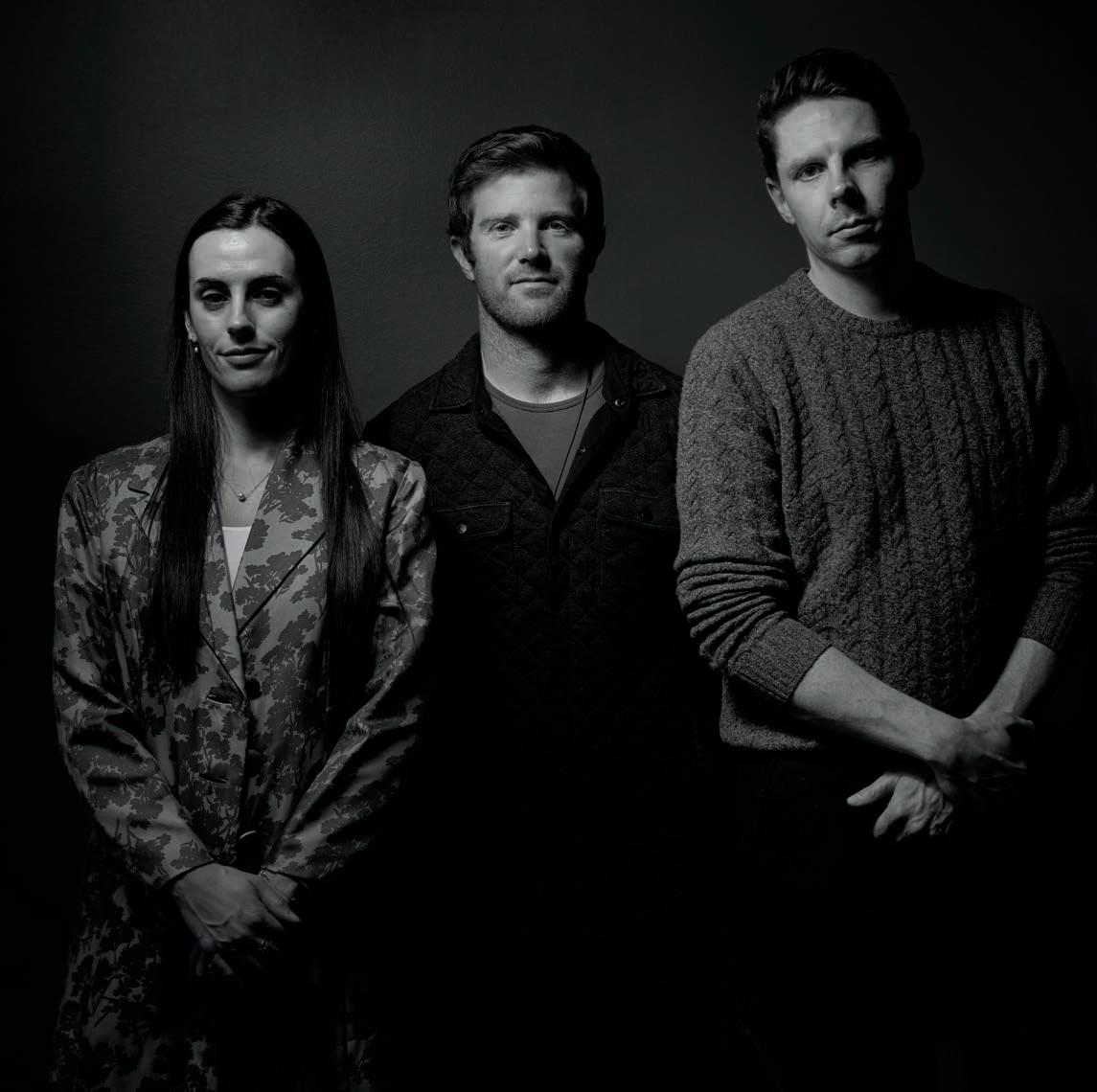
competition. Their idea, for a medical device company, didn’t win, but Coburn was bitten by the entrepreneurial bug.
He continued to brainstorm ideas, and one day at Logan Airport, as he stared up at the television screens in the terminal, Coburn realized that he was ignoring the ads. “I started wondering, ‘What if we could attach questions to ads to make sure you were paying attention? And then pay people for getting the answers right, and only charge the businesses if you got the answer right,’” says Coburn.
The next year, he entered the BC VC with the idea for that business, called Jebbit, and tied for first place. One of the judges was Peter Bell ’86, P ’20, ’25, who told him about a summer accelerator program for college startups at Highland Capital Partners, where Bell worked at the time. “That program changed the trajectory of my life,” says Coburn. He dropped his plan for medical school and ran with Jebbit, which today employs 100 people and works with premier brands like the NFL and L’Oreal.
Then he came up with another idea. “I went to Peter and said, ‘Why don’t we do a summer accelerator just for BC students?’” Together with Miguel Galvez, MCAS ’12, they launched SSC Venture Partners as a nonprofit accelerator program for that purpose. Ten years later, SSC has become a fixture of Boston College’s entrepreneurial community, which revolves around the Edmund H. Shea Jr. Center for Entrepreneurship and its daily programming. More recently, SSC added venture capital to its offerings, pivoting to for-profit status. It also opened up its accelerator to Boston College alumni and staff.
SSC’s general partners (GPs) take no salary but participate in funding decisions and mentorship and receive
PHOTOGRAPH BY KELLY DAVIDSON 38 CARROLL CAPITAL 2024
SSC’s general partners Christina Quinn ’13, Tom Coburn ’13, and Duncan Walker ’13 (not pictured: Peter Bell ’86, P ’20, ’25).
a portion of fund earnings. And they “care deeply about BC and paying it forward to younger generations of people within the BC community,” says Christina Quinn ’13, one of the GPs and a founder of Lua, an early-stage startup consultancy. “It’s very reflective of the broader sentiment you see with BC alumni—that sense of camaraderie and care for fellow Eagles.”
Ted Wind ’25 and Dan Biundo, MCAS ’25, participated in the
“ Why don’t we do a summer accelerator just for BC students?”
Tom Coburn ’13
summer accelerator program after sophomore year for their business Socion, a software platform in the influencer marketing space. “We entered the accelerator in a kind of fog,” Wind recalls. “Where should we go with the business? Where do we start? But right from the beginning, we had help.” They tapped into SSC’s robust mentoring network, and this year, the two juniors landed their first customers. The business continues to grow.
Through SSC, alumni and other investors have made 96 investments in Boston College startups to the tune of $5 million altogether. Forty-three percent of those startups had diverse founders, who are otherwise “woefully underrepresented in the venture capital industry,” Quinn says, noting that less than 2 percent of all venture capital goes to women and minorities. But she adds that SSC has been
intentional about “welcoming and nurturing diverse founders.”
One of them, Lurein Perera, MCAS ’21, went from the Shea Center’s spring accelerator to SSC’s summer accelerator. After those experiences, he came up with the idea for GiveCard, which provides a cash-transfer solution with no fees for the end user. Perera drew a six-figure investment in GiveCard from SSC two years ago and was introduced to other investors who added to the pot. “Tens of thousands of people in the US are using GiveCard today,” says Perera. “They’re getting meals, hotel stays, and paying for education. To have had that kind of impact is really cool.”
SSC provides $10,000 in funding to each accelerator startup, and the successful businesses that have emerged from the program “are as diverse as its founders,” says Duncan Walker ’13, CTO of music marketing firm Heard (which went through the accelerator) and an SSC GP. He points to companies ranging from Viv, which makes sustainable periodcare products, and Kured, a charcuterie board company with stores in New York and Boston, to Fisherman, which produces restaurant websites.
All of this fits seamlessly into Boston College’s entrepreneurial ecosystem, says Jere Doyle, the Popolo Family Executive Director of the Shea Center, explaining that many of Shea’s speakers, mentors, and competition judges come from SSC. “It’s natural for a Shea student to look to SSC when it’s time to take next steps.”
The team invites anyone interested in SSC to contact partners @sscventurepartners.com.
The Year in Competitions
Student Shark Tank
At the annual Strakosch Venture Competition, hosted by the Edmund H. Shea Jr. Center for Entrepreneurship, eight teams of students vied for cash prizes to fund their businesses. From an autonomous robot that cleans beaches to a competitive stock trading game, their pitches fired up the crowd. Each team had four minutes to present their business plans, followed by a Q&A with a four-judge panel that assessed teams on their presentation, market strategy, and business feasibility. Caroline Driscoll, MCAS ’27, took home the first place prize of $10,000 as well as the $2,000 crowd favorite award for her creation, Flobag, a waterproof, floatable, and trackable bag.
Housing for Heroes

At this year’s Joseph E. Corcoran Center for Real Estate and Urban Action Case Competition, 65 teams from 46 schools nationwide proposed solutions to the problem of homelessness among US veterans. Participants were asked to pitch plans to redevelop a building on a Veterans Affairs campus in Los Angeles into affordable housing units, taking legal and financial factors into consideration. Four teams advanced to the final round: University of Wisconsin, Madison took home first place, with Boston College placing second and winning a prize of $3,500.
The Ethics of Electric
What are the financial, legal, and ethical factors surrounding the electric vehicle industry? The Walter H. Klein Ethics Case Competition, hosted by the Boston College Center for Corporate Citizenship, put that question to student participants. Playing the role of consultants, students analyzed the benefits and drawbacks of purchasing nothing but electric vehicles for a rental car company’s 2024 inventory, making recommendations based on their findings. Aradhya Garg ’27 and Sophia Salamy ’27 emerged as the winners and will represent Boston College at the national Collegiate Ethics Case Competition at the University of Arizona during Fall 2024.
Off to the Races
More than 250 students across 44 teams developed buy-side pitch books for the hypothetical acquisition of horse racing complex Churchill Downs by motorsport league Formula One as part of the 2nd Annual Boston College M&A Case Competition, hosted by the Student Business Consortium (SBC). SBC student mentors held weekly preparation sessions leading up to the first round of competition. Citibank then offered virtual workshops for the three teams moving on to finals. The competition judges came from investment banking firms DB, RBC, Barclays, and UBS. MASON BRAASCH
2024 CARROLL CAPITAL 39 ILLUSTRATION BY STUART BRADFORD
Faculty Findings
A French anti-terrorism unit and an earthquake in China aren’t typical settings for uncovering new managerial insights. But both are backdrops against which Carroll School scholars have lately explored questions that may change how organizations operate. Another setting for several recent research papers—the stock market—is certainly more conventional. But the professors’ findings are just as significant, suggesting better ways of understanding how capital markets really work. TIM
GRAY
A Better Means of Triage
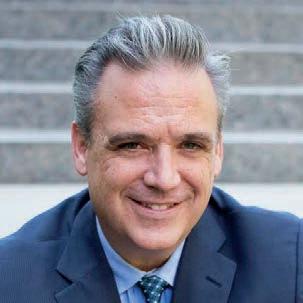
Repairing Trust
An elite French counterterrorism unit might seem to have little in common with the typical employer, where no shots are fired nor hostages taken. But O’Connor Family Professor of Management and Organization Michael Pratt and a colleague have found that the French commandos, the Groupe d’Intervention de la Gendarmerie Nationale (GIGN), have something to teach all employers about
trust and how to repair it in the workplace. “Organizations that use project teams to interdependently handle complex or innovative work, where improvisation may be critical and violations common, are among those contexts where trust is both essential and fragile,” the researchers write in the Academy of Management Journal. The GIGN, unlike many organizations, has formal processes for recognizing and repairing breaches of trust, often encountered in field operations. It also has an ethos that no breach is permanent if the violator is serious about repairing it: “When trust violators successfully went through the standardized process laid out by the organization, they were fully trusted again on subsequent missions.”
In the aftermath of mass casualty incidents (MCIs) like earthquakes and tsunamis, field hospitals are erected. Traditionally these hospitals have followed the commonsense approach of treating the worst survivable injuries first. But William S. McKiernan ’78 Family Faculty Fellow Nan Liu (Business Analytics) and colleagues have found that a better guideline considers what will happen as the conditions of other patients deteriorate. Using data from the 2008 Sichuan earthquake in China, which killed nearly 90,000 people and injured nearly 400,000, they concluded that prioritizing patients based on an initial assessment of whose conditions will deteriorate (and how they will deteriorate) can produce better overall outcomes. “An MCI response policy to do the greatest good for the greatest number need not always prioritize treatment solely based on victim initial health conditions,” Liu and his coauthors write in Operations Research
Even Companies Have Feelings
We all prefer those who say nice things about us—and according to research by Joseph F. Cotter Professor of Accounting Mark Bradshaw, Accounting Professor Lian Fen Lee, and a colleague, that’s as true of companies as it is of people. The authors, in The Accounting Review , examine the characteristics of the lists of financial analysts that companies post on their investor relations websites. Analysts, who often work for investment banks, help investors evaluate publicly traded companies. Some
ILLUSTRATION BY JAMES GRAHAM 40 CARROLL CAPITAL 2024
Research
Assets
RECENT PAPERS
companies post the names of analysts that track their performance; others don’t. Such lists are more likely to appear when, for example, companies are selling stock or receive less media coverage, the researchers say. “We also find that firms are more likely to include prestigious analysts (i.e., All-Stars or employed at larger, more prestigious brokerages) but more likely to exclude analysts who are less favorable about the firm or do not issue consistently beatable [earnings] forecasts,” they write. “The obvious interpretation is that firms prefer analysts who help portray the firm in a more positive light.”
Loyalty Benefits Hook Bond Investors
Bonds often trade in what are called over-the-counter markets. An investor who wants to buy a bond contacts a dealer, asks for a price, and, if the price is acceptable, buys. Finance Professor Milena Wittwer and a colleague wanted to know why investors often
prefer OTC markets and shy away from centralized exchanges, which, in theory, should be cheaper. “Even though these types of platforms already exist in many OTC markets, investors are reluctant to use them,” they write in the Journal of Political Economy. Using data from Canada’s government bond market, they find that investors receive “loyalty benefits” for transacting directly with dealers in Canada: The dealers provide ancillary services like investment advice “only to customers with whom the dealer has a close business relationship.” Like the free drinks that bartenders bestow on their best customers, those extra services keep investors coming back, even though they’d likely find better prices if everyone used an exchange.
Laid-Back Funds Help Inform CEOs
As index funds have surged, they’ve become controversial. These funds passively own all the securities in a particular market index,
Finance Professor Milena Wittwer, below, and a colleague wanted to know why investors often prefer OTC markets and shy away from centralized exchanges, which, in theory, should be cheaper.

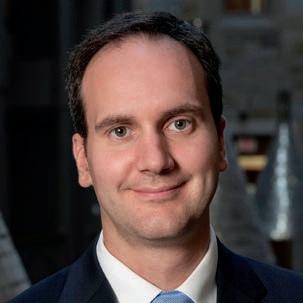
the share price,” the researchers write. The Malenkos’ paper examines not just index funds but the broader implications of differences in shareholder and management beliefs and what those can mean for a company’s ownership structure.
Can Diagrams Improve Decision-Making?

instead of buying and selling stocks or bonds as market conditions change. Critics say they undercut the monitoring of public companies: Since they hold stocks regardless of their performance, the funds have no reason to watch over corporate management. But Finance Professors Nadya Malenko (Wargo Family Faculty Fellow) and Andrey Malenko (Hillenbrand Family Faculty Fellow) say that’s wrong. In a paper published in The Review of Financial Studies, the Malenkos and coauthors argue that index funds have an incentive to express their opinions to corporate management because they can’t exit. Actively managed investment funds that disagree with a company’s direction will sell the stock. Since index funds can’t— remember, they must hold all the stocks in an index— they do engage with management. “We show that, as a result, the growth in passive funds can enhance managerial learning from shareholders, increase the informativeness of corporate decisions, and raise
If a picture’s worth a thousand words, might a diagram be worth a thousand dollars—or more? Marketing Professor Min Zhao and colleagues set out to test how visual depictions of options can affect financial decision-making. For many decisions, consumers confront long lists of options— for example, the many policies on an insurer’s website or the many mutual funds offered by an investment company. But long lists can overwhelm. So Zhao and her coauthors, in an article in the International Journal of Research in Marketing, tested two alternatives: a converging graphic, where multiple options are accompanied by arrows that point to a particular decision, like retirement saving, and a diverging one, where the arrows flow outward from a financial goal, like charitable contributions, to the ways of achieving it. The researchers found that “a financial goal involving inward (versus outward) monetary flow is evaluated more favorably when the goal and its subordinate options are depicted with a converging (versus diverging) diagram.” In other words, converging diagrams can help savers, and diverging ones, givers.
Visit bc.edu/csom-research for more faculty research.
2024 CARROLL CAPITAL 41
Assets Impact

Ready, Fire, Aim!
MORE AGGRESSIVE RECRUITING TIMELINES MEAN TOO MANY STUDENTS INTERN FIRST, ASK QUESTIONS LATER. PATRICK L. KENNEDY ’99
Picture a placid pond. Seen from the shore, a few ducks seem to be swimming along smoothly, nary a feather out of place. But below the water line, their little webbed feet are kicking like crazy. Today’s would-be accountants and investment bankers are a bit like that.
Carroll School students are staying afloat— earning good grades while juggling classes and extracurriculars. They’re applying for internships, often working part-time, and maybe even starting companies. They almost make it look easy. But a lot of hidden effort goes into keep-
ing those balls in the air. And students concentrating in finance and accounting face an extra challenge, one that has lately begun to consume more and more of their time.
For these students, the first step toward landing a post-graduation job offer is to secure a summer internship in an accounting firm or investment bank. In the past, this process was fairly straightforward: You’d apply during the spring of junior year for an internship that would begin that very summer—within a few months at most. “Starting in probably 2016, that
accelerated to [interviewing] fall of junior year for the following summer,” says Amy Donegan, assistant dean for undergraduate career advising. “In 2018, it got moved up to sophomores.” The recruiting rush reached the point where, in January 2024, a slew of sophomores already had Summer 2025 internships lined up.
This change brings the stress of applying for internships into the earliest fall days of sophomore year. But perhaps the new system has both good and bad points? After all, it might be reassuring to have that internship sewn up early.
Donegan doesn’t mince words. “I would say it’s mostly bad, to be honest,” she says. “College is a time when you’re supposed to be exploring.” Particularly so at Boston College, where formation of the whole person is a real focus.
And exploration has a practical side. Even the hardest of hard-nosed business students should want to know what field best suits them. “There are a handful of people who probably come out of the womb knowing that they want to do investment banking,” Donegan says, but the majority are less certain. They need time to learn about their options, and that requires getting a grasp on the basics. “You might be thinking about doing accounting, but you don’t really know,” Donegan says, adding that the same goes for investment banking (IB). “You could be interviewing for an internship that starts the summer after your junior year when you’re a sophomore, two weeks into your first Fundamentals of Finance course.”
The whole recruiting dance is timeconsuming, especially for finance majors who face a more competitive market than accounting students, she says. “You have to do an incredible amount of networking and interview preparation.” Many of them respond by “underloading,” taking only four courses in a semester, with plans to make up the missed credits later. Lexi Patton ’27 knows students who have skipped classes in order to attend networking events. “They’re obsessed with trying to connect with as many people as possible,” she says. “Even freshmen feel like they’re already behind.” Patton scored her own internship as a freshman, though that is still unusual.
The uptick in recruiting activity has caused
ILLUSTRATION BY EDU FUENTES 42 CARROLL CAPITAL 2024
ripples of panic across other majors as well, says Donegan. Students might be aspiring to an industry that has kept the traditional timelines, but when they see friends getting internships already, “It almost creates a cycle of fear, like, ‘Oh, I’ve got to be jumping into this early, and I should know what I want to do right now.’”
Donegan and her colleagues provide a variety of resources to help finance and accounting majors navigate these shoals. They host Bank Week, a series of no-pressure educational events (rather than networking events) to help students learn about corporate finance, asset management, and other types of finance. They’ve also hired industry coaches—three alumni, with help from seven seniors—who offer guidance, review resumes, and conduct mock interviews.
And staffers like Associate Director for Career Advising Drew Barksdale work hard to get the word out to underrepresented and first-generation students that employers are recruiting to diversify their workforce. Attending Barksdale’s Diversity in Business events “broadened my mindset about [career] opportunities,” says finance student Justin Holmes ’26.
In 2018, soon after the trend toward earlier recruitment began, the Carroll School led a consortium of business schools in issuing an open letter to IB employers expressing their concerns. Many employers privately agreed, Donegan says, but the situation has proven too thorny to untangle.
Today’s Carroll School students are high achievers, and they’re managing full plates with impressive aplomb. But parents and employers should understand the pressures they’re under. The students are on the ball; but to an extent, that ball is a rolling boulder that they dare not slip off.
Students are “obsessed with trying to connect with as many people as possible. Even freshmen feel like they’re already behind.”
Lexie Patton ’27
What’s All the Fuss about Business Analytics?
In 2020, the Carroll School’s Operations Management Department changed its name to Business Analytics, reflecting what Powers Family Dean Andy Boynton referred to as a “tsunami” in business as well as management education. The field of business analytics continues to balloon, fueled by the proliferation of digital technologies, including enormous amounts of customer data available to companies. Meanwhile, the number of Carroll School students choosing one of three concentrations offered by the department (Business Analytics, Operations Management, and Information Systems) has grown by more than five-fold over the past decade. The department has drawn nationwide notice, with the undergraduate program currently ranked 10th by U.S. News and World Report. Still, many people have basic questions about this phenomenon.
What is business analytics? For businesses hoping to stay relevant in an increasingly technological world, data is integral. Business analytics is not only the use of statistical, mathematical, and computer science techniques to
understand and analyze this data, but also the process of communicating findings. An analyst equipped with the tools to understand and interpret complex data can “help organizations make informed decisions and find data-driven solutions to problems,” says Jiří Chod, the Michael A. Gooch Family Faculty Fellow and Business Analytics Department chairperson. This isn’t an industry, though. Business analytics classes prepare students to work across industries.
“It’s about taking messy data and making it readable for someone who isn’t a data expert,” says Madeline Cortés, assistant director for undergraduate career advising. All that helps firms understand customers better.
What can you do with these skills? While the skills can be applied broadly, “they are critical for anyone wishing to start their career as an analyst,” Chod says.
Jane Ewald ’20, a growth analyst at Grubhub, planned to go into marketing, but pursued business analytics as a co-concentration after learning how it could benefit her career. “As an analyst with a background in marketing, I’m able to work on strategy
and campaign creation, but also have a secret ingredient, which is data,” she says.
Who’s taking these Carroll School courses?
Everyone. All undergraduate students take three courses in the Business Analytics Department to equip them with the foundational components. This means every student is “exposed to essential programming languages in the context of statistical analysis, machine learning, and data management,” says Chod. Ewald adds that the curriculum teaches “you how to look at the nitty-gritty of the data and also how to look at the big picture of what it means and why it is important.” The courses are also finding their way into other departments, with classes like Data Analytics in Finance.
How else are students getting exposed to this field? Cortés facilitates events through the career advising office, where students can ask alumni questions and inquire about opportunities. After graduation, the students find a welcoming job market, says Chod, noting that 83.5 percent of 2023 graduates with one of the department’s concentrations secured a job within a month of graduating, with an average starting salary of $90,787.
MASON BRAASCH
2024 CARROLL CAPITAL 43
TAKEN INTO ACCOUNT
TODAY’S SHAREHOLDERS WANT COMPANIES TO REPORT ON THEIR SOCIAL AND ENVIRONMENTAL IMPACT—AND THE RISKS THEY FACE. A NEW ACCOUNTING COURSE PREPARES STUDENTS TO DO JUST THAT.
BY WILLIAM BOLE
“And what about McDonald’s?” Professor Mary Ellen Carter asked as she gestured toward a screen in the corner of the classroom after clicking on a new slide. Carter was asking a particular question about the world’s largest fast-food chain, because she was teaching a particular kind of accounting class—offered for the first time this past academic year and titled “ESG Reporting and Analysis: Accounting for a Changing World.”
On that November morning in Fulton 110, the class was scrutinizing ratings of how companies perform on environmental, social, and governance (ESG) issues. Hands across the room went up when Carter asked about McDonald’s. A young man sporting a hooded gray sweatshirt answered, “They got an upgrade.” The student had deciphered from the data that the loftier rating for McDonald’s came about because two foreign countries abounding with golden arches ramped up their recycling requirements. The company merely complied.
Trillions of dollars are rolling into ESG investment funds, also known as “sustainable” funds. Naturally, accountants and finance professionals are in the thick of it. They’re doing things like preparing disclosures mandated by the Securities and Exchange Commission, including reports on such ESG-related issues as risks associated with climate change. Hence the new course that exposes students to the “landscape of corporate sustainability reporting,” as Carter puts it, and to this “changing world” declared in the course title.
“There are lots of players in this space—consultants, software developers, raters, and even ratings of raters. There’s just a lot of movement taking place,” the professor said during class, herself an object in motion as she dashed from blackboard to screen with clicker in hand. Since shareholders are central players, Carter, who
is the Carroll School’s Joseph L. Sweeney Chair, invited Leslie Samuelrich, MCAS ’85, to speak at another class meeting. She is president of Green Century Capital Management, a family of mutual funds using ESG criteria to invest in companies. Green Century monitors and prods corporations on matters such as reducing the use of plastics and protecting tropical forests.
Samuelrich tossed up what seemed like a softball: “What do you think is ESG investing?”
A student in the back row said something about making a positive impact on the world, to which Samuelrich replied with a gentle “no.” She said ESG is about risk assessment—for instance, whether a supply chain is exposed to climate hazards including extreme storms and coastal flooding. “ESG isn’t about how well companies are doing to protect the environment and serve society,” she continued. “It’s about measuring the risks that companies face, and how well they’re responding to those risks. Most people don’t realize this.” Her point applies to both ESG enthusiasts and detractors at a time when social investing is facing a political backlash from those who see it as “woke.”
Samuelrich offered a window on the typically adversarial process of advocating change with companies, often leading to showdowns
between activist shareholders and corporate officers at annual spring meetings. She left her fellow Eagles with thoughts of a career in ESG, giving her email address and suggesting they follow her on social media. “We could be friends,” she said to chuckles and applause.
These and other students had another networking opportunity courtesy of Carter, Professor Tara Pisani Gareau, who directs Boston College’s Environmental Studies Program, and Kevin O’Connell, MBA ’98, who leads PwC’s ESG practice. They collaborated on a daylong October event in Fulton where members of O’Connell’s staff helped 50 students unpack a carbon-emissions case study, before presenting an afternoon panel on ESG careers. Three years ago, O’Connell had 12 staffers; now there are over 300, and he expects that number to more than triple in the next couple of years.
A few weeks later, Carter’s class was discussing how companies get different ESG scores from different raters. One factor is methodology, like how much weight the rating firm gives to one issue as distinct from another (say, livable wages versus zero emissions). Another factor is less palatable: Some raters offer consulting services and might go easy on a company they’re currying favor with. “So, there’s corruption in the ratings,” one student surmised. The professor smiled—“We like to call it conflict of interest.”
The probes continue in Fall ’24 with two sections of Carter’s ESG class. So does the collaboration: She and Gareau, a biologist, are teaming up to teach a course in Boston College’s undergraduate core curriculum titled “Climate Change and Corporate America.”

44 CARROLL CAPITAL 2024 Assets Investments
Professor Mary Ellen Carter
Photograph: Lee Pellegrini
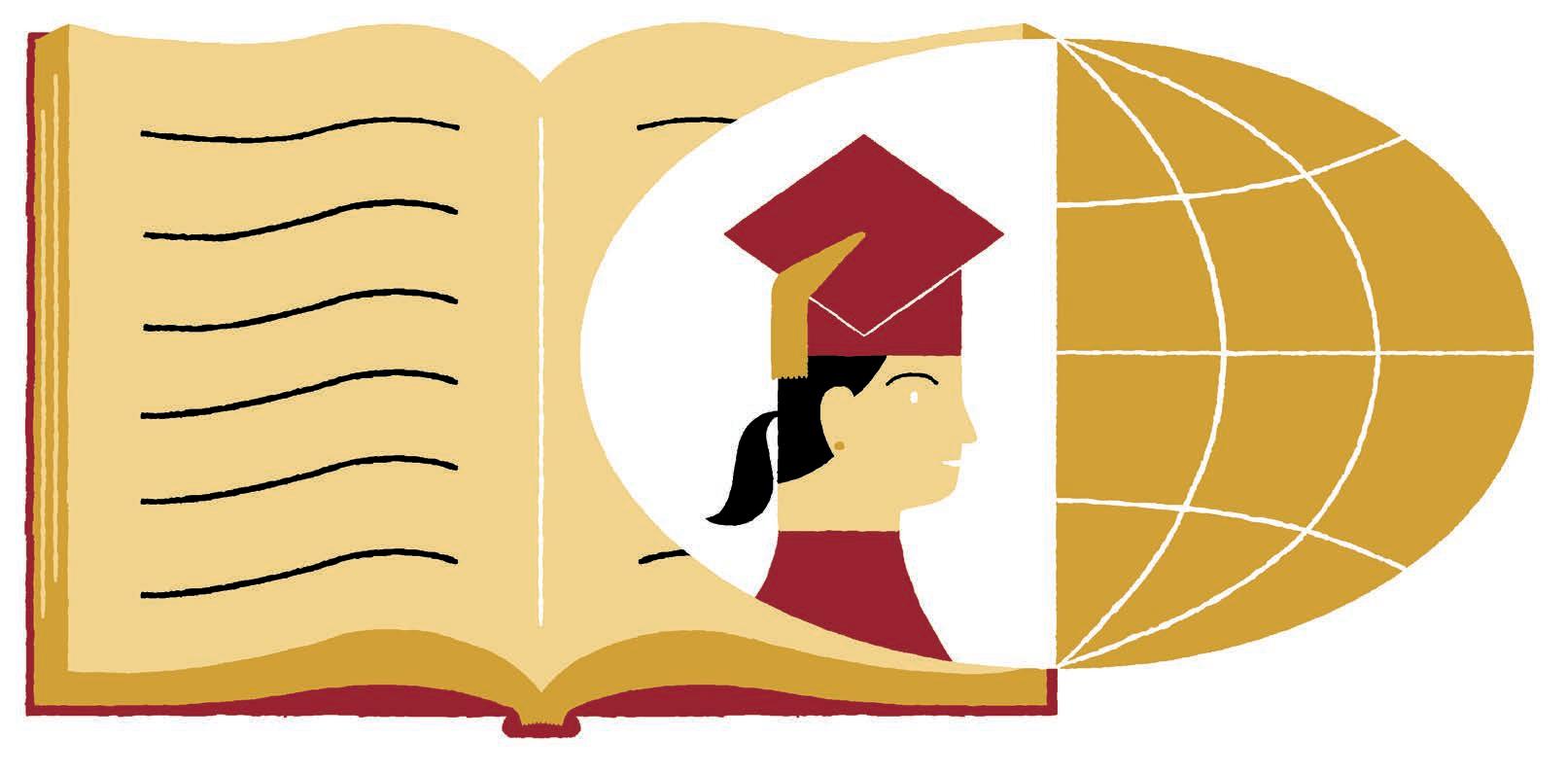
CURRICULUM
From Classroom to Career
Spring Portico classes provide secondsemester seniors with a space to reflect as they begin their transition into the workforce.
BY MASON BRAASCH
Rebecca Michaels ’24 ended her time at Boston College the same way she started it: in a Portico classroom. With space in her spring schedule for an elective course, she opted to take a readingintensive, discussion-based Portico class for seniors.
Since 2008, every first-year student in the Carroll School has taken Portico. As an entry point into a school of management,
Portico asks these students to examine business from global, multidisciplinary, ethical, and social perspectives. Now, a slate of electives with the same DNA as Portico, and exclusively offered for seniors, has emerged.
Michaels chose to take a course that would enrich her Boston College experience rather than coast her way to graduation. “As a senior, you can take classes where you might not have to put in as much effort,” she says, “but I think taking this kind of class is the best way to get the most out of the semester.”
With the real world just months away, these classes build upon the foundation of Portico and highlight issues students may face as they enter the workforce. “The courses have a thread of reflection and meaning with an eye toward post-graduation life,” says Ethan Sullivan, senior associate dean for undergraduate programs. “It’s an academic experience in their last semester
that meets them where they’re at.” The classes come in response to students expressing interest in Portico-like opportunities after freshman year.
“The Ethics and Politics of Capitalism,” taught by Portico faculty Michael Smith and Jeremy Evans, was launched in 2016. Since then, a handful of Portico electives have been added to the course catalog, including three offered during Spring 2024: “Free Markets, Faith, and the Common Good,” “Leading Others and Leading the Self,” and the brand new “Everybody’s Working for the Weekend: Ambition and Alienation,” taught by Christine Rojcewicz, assistant professor of the practice.
Rojcewicz’s class examines modern workplace issues like isolation and burnout and compares them to philosophical readings from authors like Karl Marx and Max Weber. Rojcewicz encourages her students to speak openly about their personal connections to the issues. “These
students have one foot in academia and one foot in the working world. Their future is looking them in the face,” she says. “We’re giving them a space to reflect on what they will be doing in the workplace and anticipate any moments of alienation that they might feel in their own futures and jobs.”
For Michaels, who studied information systems and finance and minored in philosophy, the readings and class discussions helped to expel anxieties about problems like burnout. Headed toward a job in investment banking, she says that working through these issues as a class made her feel better prepared to navigate them.
“Some of the best classes you take at BC are ones that aren’t required. They teach you things you didn’t think you needed to learn,” she says. “It’s good for us to have these scary conversations now, in a classroom setting, rather than be unprepared to face them in the workplace.”
2024 CARROLL CAPITAL 45 ILLUSTRATION BY ADAM M c CAULEY
Assets Distinctions
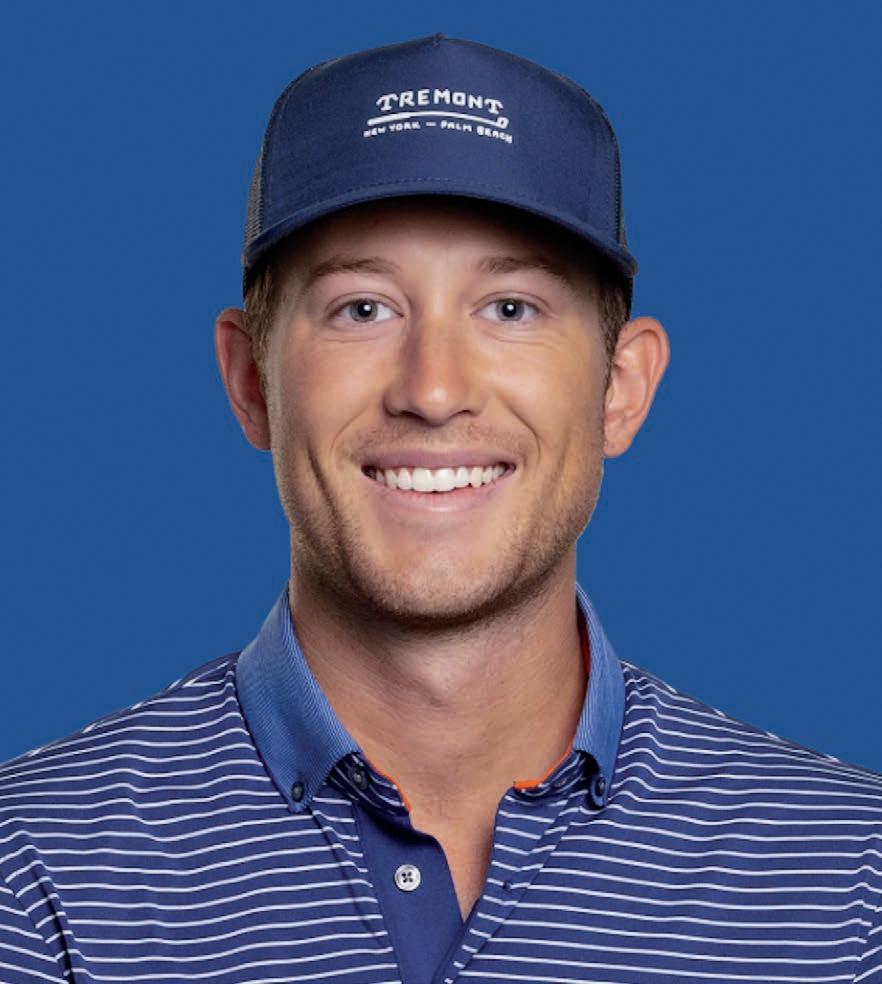
Above Par
CHRISTIAN CAVALIERE ’20 JUST WANTED TO RUN HIS BUSINESS AND PLAY GOLF WITH HIS FRIENDS. THEN HE ENDED UP IN THE US OPEN.
BY RILEY DAVIS ’24
Qualifying for the 2023 US Open wasn’t on Christian Cavaliere’s to-do list. He had simply been missing the fun of competing alongside professional golfer friends when he signed up for a series of qualifier tournaments. But with a little luck and a sharp swing, Cavaliere ’20 earned a spot in one of the major men’s golf championships—and a big opportunity to show off his business.
Cavaliere first picked up a set of clubs at the age of seven. He quickly appreciated the sense of power he felt when strategizing about his game. “I’m a bit of a control freak,” he says, laughing. “Being able to control everything that I do on the golf course definitely appealed to me.” By 14, Cavaliere was already competing in nationally ranked tour-
naments around the country. At Boston College, he played for the men’s golf team while pursuing a marketing concentration in the Carroll School.
But golf wasn’t his only hobby— Cavaliere is a self-described “crafty” person, and at a young age, his mom made sure he knew how to sew. “She imparted to me that it was really important—if your pants rip you can mend them,” he explains.
He put those sewing skills to work junior year when he began crafting custom patches to elevate the golf team’s hats. As the Boston College community took notice of the team’s newly spiced-up swag, he found himself getting more and more requests for personalized gear. Cavaliere recalls how hilarious it was to have a sewing machine set up next to his golf gear in his compact 2150 Commonwealth Avenue dorm room.
After losing the final stretch of his senior-year golf season to the pandemic, Cavaliere decided instead to turn his dorm side hustle into a real business. “I didn’t think I would spend two-plus years on the sewing machine for five hours a day,” he says, “but I’ve always loved to make things. This became another avenue to do that.” Cavaliere launched Tremont Sporting Company in spring 2020, bringing on his former golf teammate Patrick Hallisey, MCAS ’18, as his business partner.
The Florida-based company specializes in customizing quality gear for fellow golfers and has
grown to 17 employees. The Tremont team can take anything from business logos to images of cherished pets and incorporate them into unique products like hats and club covers. “Anyone can get the generic accessory,” he says. “This makes it your own. When people take ownership, it has more importance to them.”
In June 2023, Cavaliere arrived at the Los Angeles Country Club for the US Open clad in his own Tremont gear, a world-class advertising opportunity as he warmed up on the driving range with golf royalty like two-time Masters champion Scottie Scheffler. “Sitting next to guys I’ve seen on TV my whole life was surreal,” he says. While the competition naturally brought on some nerves, Cavaliere found clarity through the level playing field the sport can provide. “These guys might practice more and have fancier technique,” Cavaliere says, “but our game of golf is not overwhelmingly different and can change day by day.” He didn’t rank but he was one of just 156 players who qualified to compete in the tournament.
While he’s not aiming to turn pro, Cavaliere plans to keep playing competitively and would love to make the US Open an annual tradition if he qualifies. It’s all about enhancing his personal game for the sake of future opportunities, for his business and for himself. He says, “I’ll be chasing the overwhelming happiness I felt at the Open for a long time.”
Cavaliere first picked up a set of clubs at the age of seven. He quickly appreciated the sense of power he felt when strategizing about his game.
46 CARROLL CAPITAL 2024
Christian Cavaliere ’20
When Carla DeStefano transferred into Boston College’s School of Management in 1971, Fulton Hall only had one women’s restroom. More weren’t needed—women hadn’t been allowed to attend the school. Now executive director of a community development corporation in Rhode Island, DeStefano was part of the class of 1974, which included the first women graduates from what was later named the Carroll School of
Management. That group of about 20 women celebrates the 50th anniversary of their graduation this year.
They Meant Business SUPPORT SYSTEM
When DeStefano arrived on campus, classmates warned her that not all professors approved of the Carroll School’s admission of women, but she soon learned that they had two influential allies—the associate dean of the undergraduate program, Justin Cronin, and Frank Campanella, a finance professor who’d become Boston College’s executive vice president. DeStefano says Cronin would regularly have one-on-one chats with the women students. “He monitored everyone’s progress.”
Those experiences eventually led her to SWAP Inc., which develops and manages affordable housing and commercial real estate in Providence. DeStefano says her Boston College education—and those who believed in her pioneering cohort of women—influenced her path. “The Jesuits taught us progressive values—how to take what you learn and do something good. At SWAP, we call ourselves social workers who build houses.” TIM GRAY
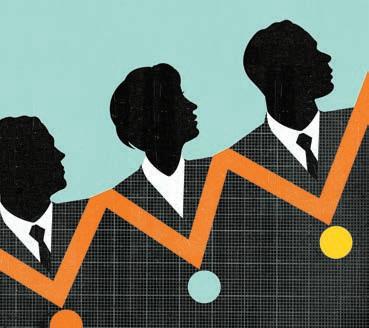
Awards and Accolades
Rui Albuquerque The professor of finance and colleagues received the Best Paper Award at the 2023 Portuguese Finance Network Conference. Their working paper, “Mutual Fund Trading, Greenwashing, and ESG Clientele,” was published by the European Corporate Governance Institute.
Lian Fen Lee An associate professor of accounting, Lee was recognized by two journals—the Journal of Accounting Research and Management Science—for her excellence in refereeing and reviewing.
Thanks to a new Carroll School grant program, Rowah Ibnaouf ’25 is bringing the concept of mutual aid to Fulton Hall.
BY ABANTI AHMED ’25
During the pandemic, Rowah Ibnaouf ’25 noticed that people in her North Carolina hometown were using Facebook to offer each other guidance on accessing essential services and available subsidies. This exchange of information and resources, called mutual aid, resonated with her. Years later, she was still wondering how to bring a similar system to Boston College. “I’m a low-income student [and] I feel very uncomfortable asking for help,” Ibnaouf says, adding that there are many University resources that students in need aren’t utilizing because they lack the relevant information. She had the chance to make her mutual aid project a reality after receiving the Carroll School’s first-ever Diversity, Equity, Inclusion, and Belonging grant in Spring 2024. The grant program, established by the Carroll School’s undergraduate office and the Winston Center for Leadership and Ethics, invites students to submit project proposals that promote inclusivity within the Carroll School. Monetta Edwards, director of the Winston Center, explains that while the school continues to create inclusion and belonging programs, this contest gives students “a voice
in the conversation” and a chance to initiate their own projects with Carroll School support.
Ibnaouf, who studies information systems and global public health, was awarded $1,500 to develop a mutual aid website that bridges the gap between students and available resources. “You learn [in the Carroll School] to use your skills for good,” she says. When the site launches, members of the Boston College community will be able to post information on academic support, government aid like EBT cards for groceries, and more.
“The best thing about mutual aid is giving people opportunities to be reciprocal,” Ibanouf says. “I hope students who aren’t lowincome will also get into the practice of sharing their expertise.”
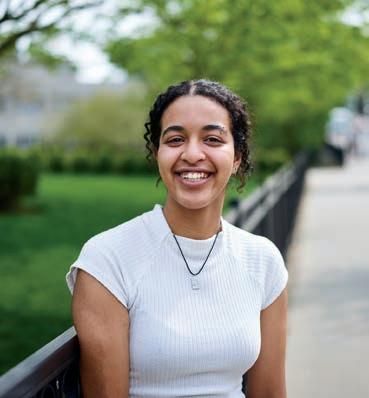
Vanessa Conzon An assistant professor of management and organization, Conzon was named a 2024/2025 Early Career Fellow for the Work and Family Researchers Network. The fellowship program provides support to recent doctoral recipients to advance their research and careers. Conzon also received the Above and Beyond the Call of Duty reviewer award from the Organization and Management Theory Division of the Academy of Management.
Jeffrey Cohen The professor of accounting received the Notable Contributions to Auditing Literature Award from the American Accounting Association’s Auditing Section. Cohen and colleagues won the award for their paper “PCAOB Inspection: Public Accounting Firms on ‘Trial’,” published in Contemporary Accounting Research
Gergana Nenkov An associate professor of marketing, Nenkov was selected by Boston College’s Schiller Institute for Integrated Science and Society to serve as a member of the University’s delegation to the United Nations 28th Conference of the Parties (COP28) Convention on Climate Change in Dubai.
Visit bc.edu/csom-research for more faculty news and distinctions.
2024 CARROLL CAPITAL 47 PHOTOGRAPH BY CHRISTOPHER CHURCHILL
FACULTY
WOMEN GRADS
Illustration: Neil Webb
Rowah Ibnaouf ’25
Bottom Line

Lifting All Boats
Jack Connors ’63, H ’07, P ’93, ’94—one of the most illustrious citizens of Boston and Boston College—stepped into the Carroll School dean’s office suite and exclaimed with a bright smile, “Are there any Eagles here!” He told the greeters that he first entered Fulton Hall 55 years ago, quipping that he visited the dean’s office mostly when he was in trouble. John and Linda Powers Family Dean Andy Boynton didn’t skip a beat—
“You still are.” In 2019, Boston magazine dubbed Connors “the last king of Boston.” He is cofounder and former CEO of Hill Holiday, which became one of the nation’s largest advertising firms; former chair of Partners Healthcare; and a longtime Boston College trustee. The dean interviewed him that day.
ANDY BOYNTON ’78, P ’13
You’re a product of the old Boston, but you’ve helped usher in the new Boston. Tell me about the journey. It’s a classic immigrant story. We lived in a two-family house in Roslindale, upstairs from my aunt’s family and my grandfather. At BC, we didn’t have the college experience that kids enjoy today. Every afternoon, I went off to work. I delivered flowers, sold peanuts at Fenway Park, and drove a Checker cab. My grandchildren tell me that college is harder today, and they’re right. But I tell them—I studied under the streetlights in my car.
Was there a turning point, a big break? I was 25 and working for a big PR firm, and a top executive said something at a meeting that changed my life: “If Jack keeps his nose clean, by the time he’s 30 he’ll be a vice-president.” I quit the next morning, because I wanted to be the architect of my own destiny. Then we started Hill Holiday. Later on, I gave a presentation for the advertising account at Wang [one-time tech giant in the 1980s]. The interviewer was a BC alum. He told me afterward that he had good news and bad news. The bad news was that I gave the worst of four presentations. The good news: “You got the account.” Which went from $165,000 to $41 million.
And you started making things happen, including our Boston College Alumni Stadium renovation in 1994 that made it what it is today. The new mayor, Tom Menino, was saying that BC’s proposal was dead on arrival [due to community opposition]. So I met with him and said BC needs this and asked, “Are you going to give the necessary approval?” Menino responded: “Are you and I going to be friends?” I said, “It’s possible. It depends on your answer.” He then told me he wanted BC to fund a new neighborhood center in Brighton. BC did that, and he approved the stadium.
What’s driving your social philanthropy? President Kennedy said a rising tide lifts all boats. He was 100 percent correct about the ocean, but it doesn’t work on land. The rising tide hasn’t lifted all boats. The Federal Reserve of Boston did a study some years ago showing that the average net worth of white families in Greater Boston was around $250,000— for Black families, it was just $8. And nobody seemed interested in Black and Brown kids, except the drug dealers. So Mayor Menino asked me if I had any ideas. I drove him out to a harbor island and said, “If you give me 30 acres for a dollar a year, I’ll raise $10 million for a summer camp.” We started Camp Harbor View in 2007 and have since raised $109 million. We serve a thousand kids a summer. They swim, play, and learn. And they can dream.
Do you have any advice for BC’s new graduates? Be the architects of your own destiny. And call somebody that you think might be lonely. Just to say hello.
PHOTOGRAPH BY DAVID YELLEN 48 CARROLL CAPITAL 2024
Jack Connors ’63, H ’07, P ’93, ’94 Former CEO of Hill Holiday
The Student-Faculty Connection
Carroll School faculty play a vital role in developing our students, challenging them to think broadly, creatively, and analytically. As world-class researchers and teachers, the faculty inspire students to soar intellectually— preparing them for leadership and problem-solving in today’s complex business environments.
Here’s a look at the power of faculty-student connections at the Carroll School:
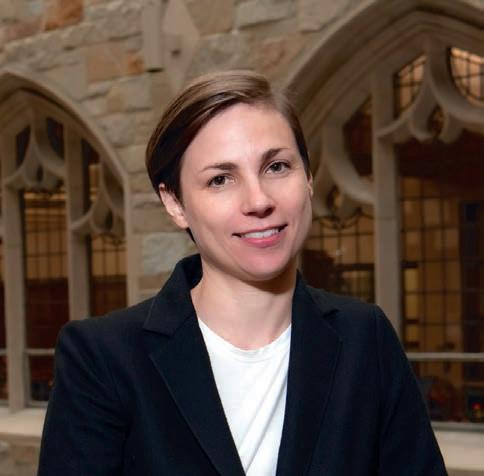
BESS
ROUSE associate professor, hillenbrand family faculty fellow, management and organization
One of Bess Rouse’s most popular courses is Idea Work: Making Things That Matter, which nurtures innovation and teamwork in a workshop-style format. Students rave about the chance to explore projects with personal significance while building real-world skills.
“Prof. Rouse’s course is the best of what BC offers— highly interactive, intellectually stimulating, and personally meaningful. She is unabashedly passionate about her work and her students’ projects, and as a result her classroom becomes a collaborative and creative stage for students to try something new.”
—Erin Miller ’24
Inspired by his own BC teachers, Thomas Wesner cultivates an intellectually vibrant, service-driven classroom infused with Jesuit pedagogy. A multiple award-winning teacher, he also directs the Carroll School’s Summer Management Catalyst Program.
“Although he has nearly 120 students every semester and his office is always full, he treats each student as his only one. He is attentive to the unique needs of his students and never overlooks anyone. I strongly admire Professor Wesner’s teaching skills, but I admire his dedication, hard work, wisdom, and care for his students even more.”
—Chloe Lelon ’23
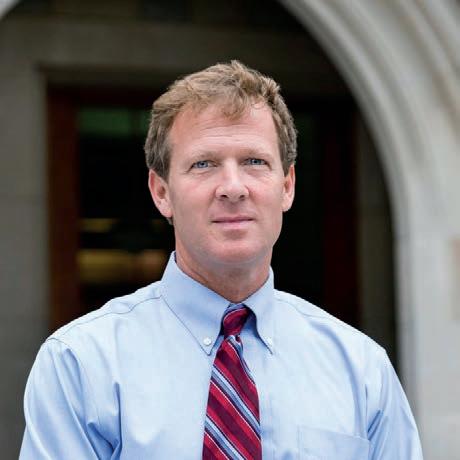
THOMAS WESNER ’89, E d D ’07 associate professor of the practice, business law and society
Your gift to the Carroll School Dean’s Innovation Fund helps support meaningful faculty-student connections. Visit bc.edu/carrollfund or contact Michelle Bishop-Dorsey at michelle.bishop@bc.edu or 617-552-9031.
MANAGING UP

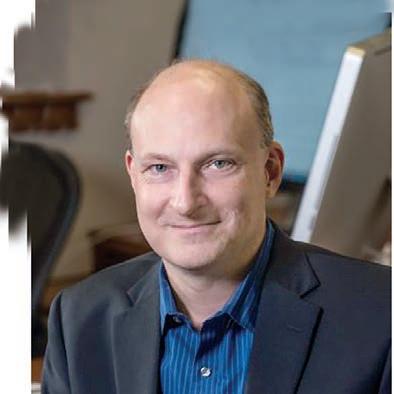
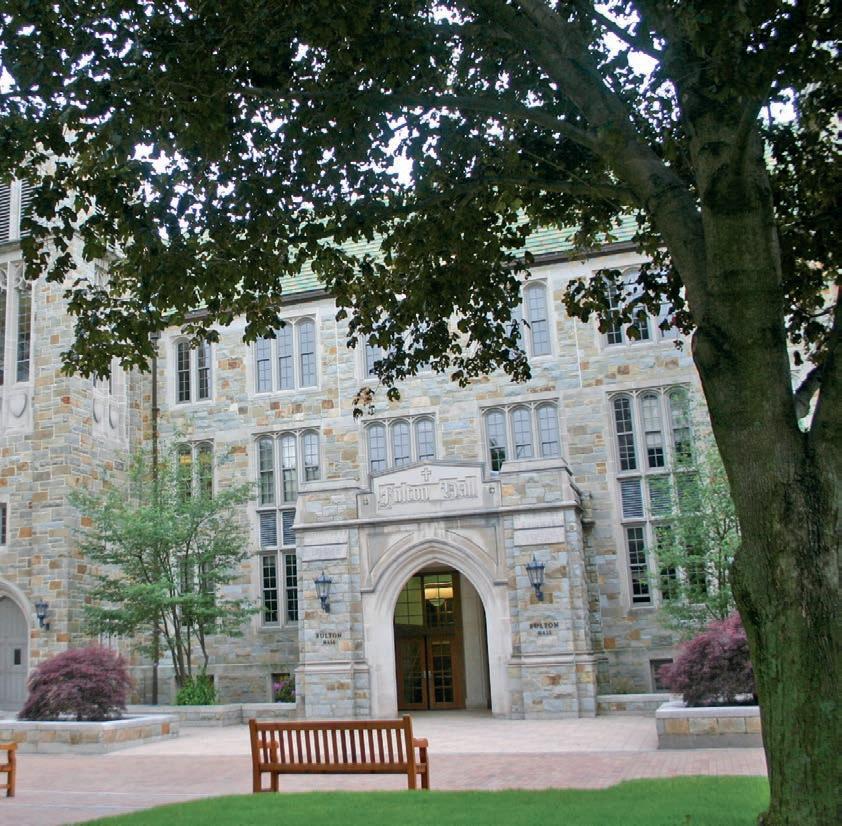
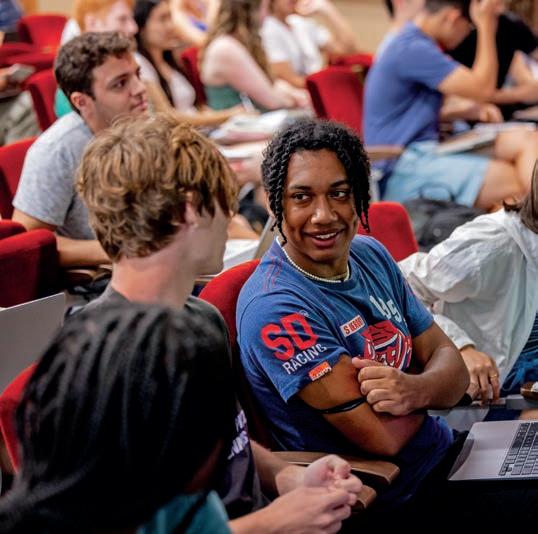
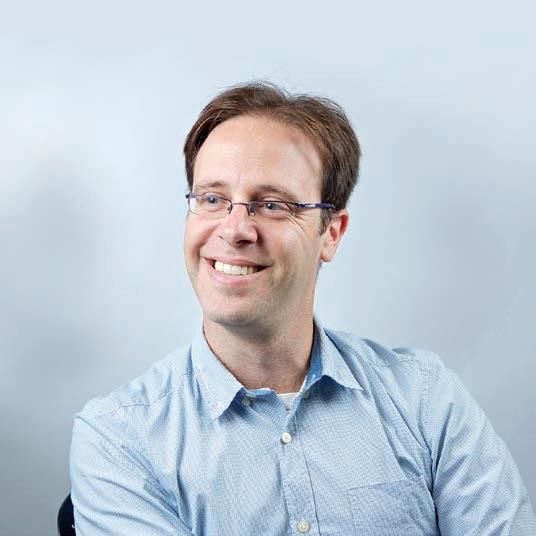
THE PUBLICATION OF THE CARROLL SCHOOL OF MANAGEMENT AT BOSTON COLLEGE Carney Hall 281 Beacon Street Chestnut Hill, MA 02467 NONPROFIT ORG. U.S. POSTAGE PAID PERMIT NO. 55294 BOSTON, MA 02205 At the Carroll School, faculty are an integral part of formative education. TURN THE PAGE TO HEAR MORE FROM OUR TEACHERS AND STUDENTS.
























 Natalie White ’20 shows off some of her Moolah Kicks, which counts Mark Cuban among its investors and has endorsement deals with WNBA players Courtney Williams and Sug Sutton.
Natalie White ’20 shows off some of her Moolah Kicks, which counts Mark Cuban among its investors and has endorsement deals with WNBA players Courtney Williams and Sug Sutton.








 BY ABANTI AHMED ’25, WILLIAM BOLE, MASON BRAASCH, AND JACLYN JERMYN
PHOTO-ILLUSTRATIONS
BY DANA SMITH
PORTRAIT ILLUSTRATIONS
BY ABANTI AHMED ’25, WILLIAM BOLE, MASON BRAASCH, AND JACLYN JERMYN
PHOTO-ILLUSTRATIONS
BY DANA SMITH
PORTRAIT ILLUSTRATIONS
































